Shows
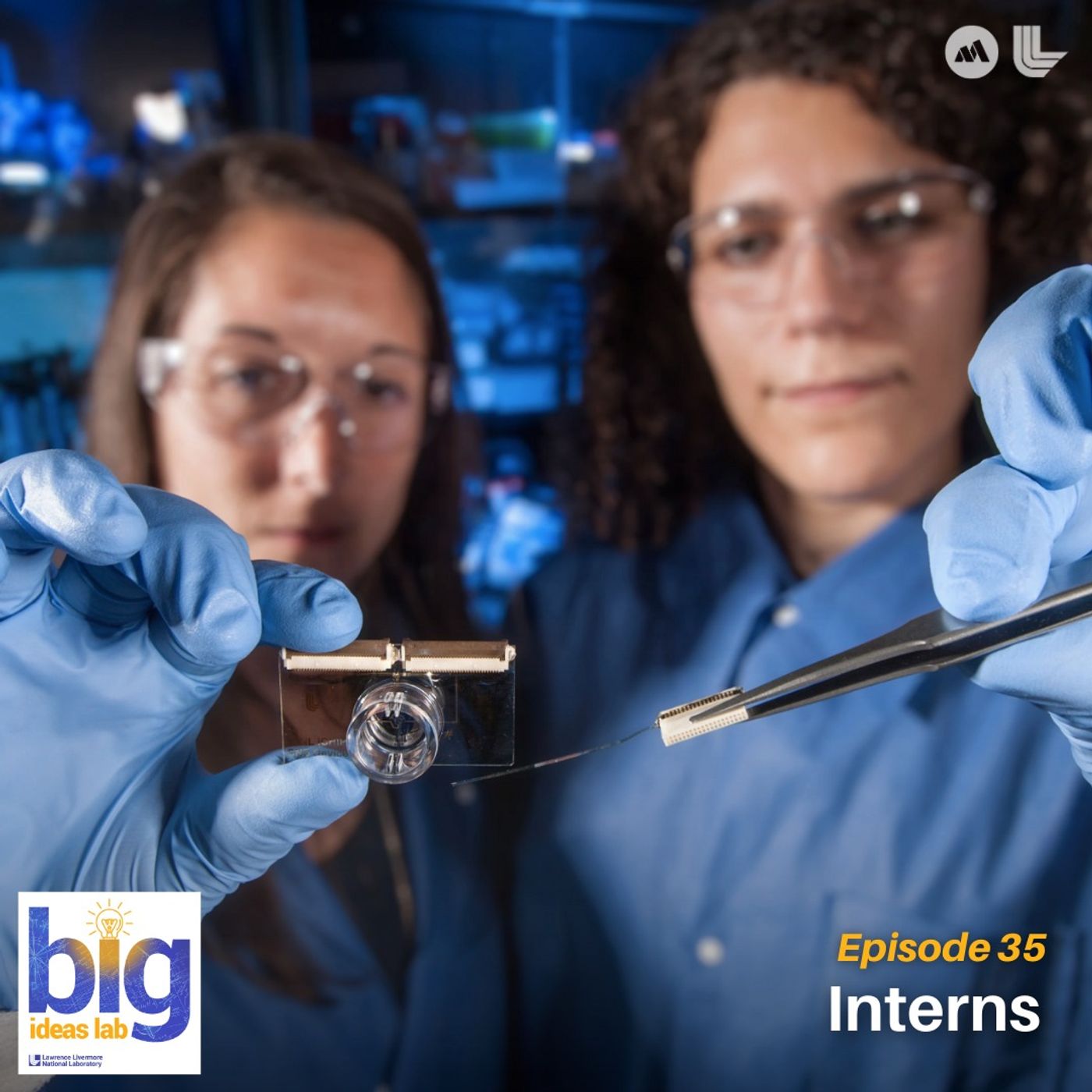 Big Ideas LabInternsWhat’s it really like to intern at one of the nation’s premier science and national security labs? In this episode of The Big Ideas Lab, we follow the journey from first-day nerves to high-impact research at Lawrence Livermore National Laboratory. Featuring stories from fusion diagnostics to bioengineering breakthroughs, we hear from interns and mentors about the challenges, the discoveries - and the culture that makes it all possible.-- Big Ideas Lab is a Mission.org original series. Executive Produced by Levi Hanusch.Sound Design, Music Edit and Mix by Daniel...2025-07-2916 min
Big Ideas LabInternsWhat’s it really like to intern at one of the nation’s premier science and national security labs? In this episode of The Big Ideas Lab, we follow the journey from first-day nerves to high-impact research at Lawrence Livermore National Laboratory. Featuring stories from fusion diagnostics to bioengineering breakthroughs, we hear from interns and mentors about the challenges, the discoveries - and the culture that makes it all possible.-- Big Ideas Lab is a Mission.org original series. Executive Produced by Levi Hanusch.Sound Design, Music Edit and Mix by Daniel...2025-07-2916 min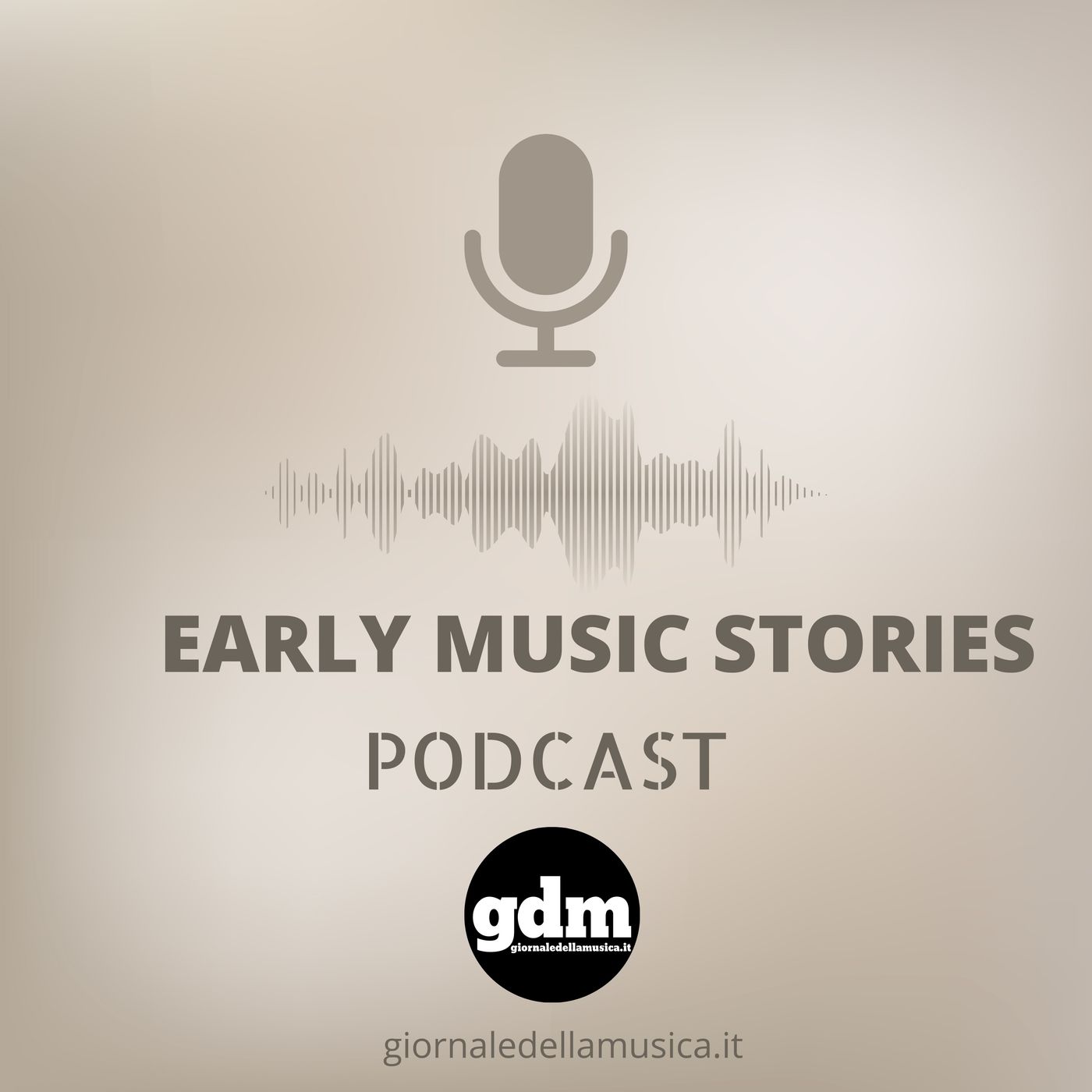 Early Music StoriesIntervista a Davide Livermore & La Fonte Musica | Monteverdi Festival Cremonal ritorno di Ulisse in patria al Monteverdi Festival 2025 La 42ª edizione del Monteverdi Festival di Cremona si è aperta il 14 giugno con un ritorno carico di memorie e significati: Il ritorno di Ulisse in patria, dramma in musica in un prologo e tre atti, composto da Claudio Monteverdi nel 1640 su libretto di Giacomo Badoaro.Quest’opera – parte della cosiddetta trilogia veneziana – affonda le radici in un’unica fonte manoscritta conservata a Vienna, ed è oggi riproposta in un nuovo allestimento che coniuga filologia e visione teatrale.A guidare la scena è Davide Livermore, qui per la prima vol...2025-07-0823 min
Early Music StoriesIntervista a Davide Livermore & La Fonte Musica | Monteverdi Festival Cremonal ritorno di Ulisse in patria al Monteverdi Festival 2025 La 42ª edizione del Monteverdi Festival di Cremona si è aperta il 14 giugno con un ritorno carico di memorie e significati: Il ritorno di Ulisse in patria, dramma in musica in un prologo e tre atti, composto da Claudio Monteverdi nel 1640 su libretto di Giacomo Badoaro.Quest’opera – parte della cosiddetta trilogia veneziana – affonda le radici in un’unica fonte manoscritta conservata a Vienna, ed è oggi riproposta in un nuovo allestimento che coniuga filologia e visione teatrale.A guidare la scena è Davide Livermore, qui per la prima vol...2025-07-0823 min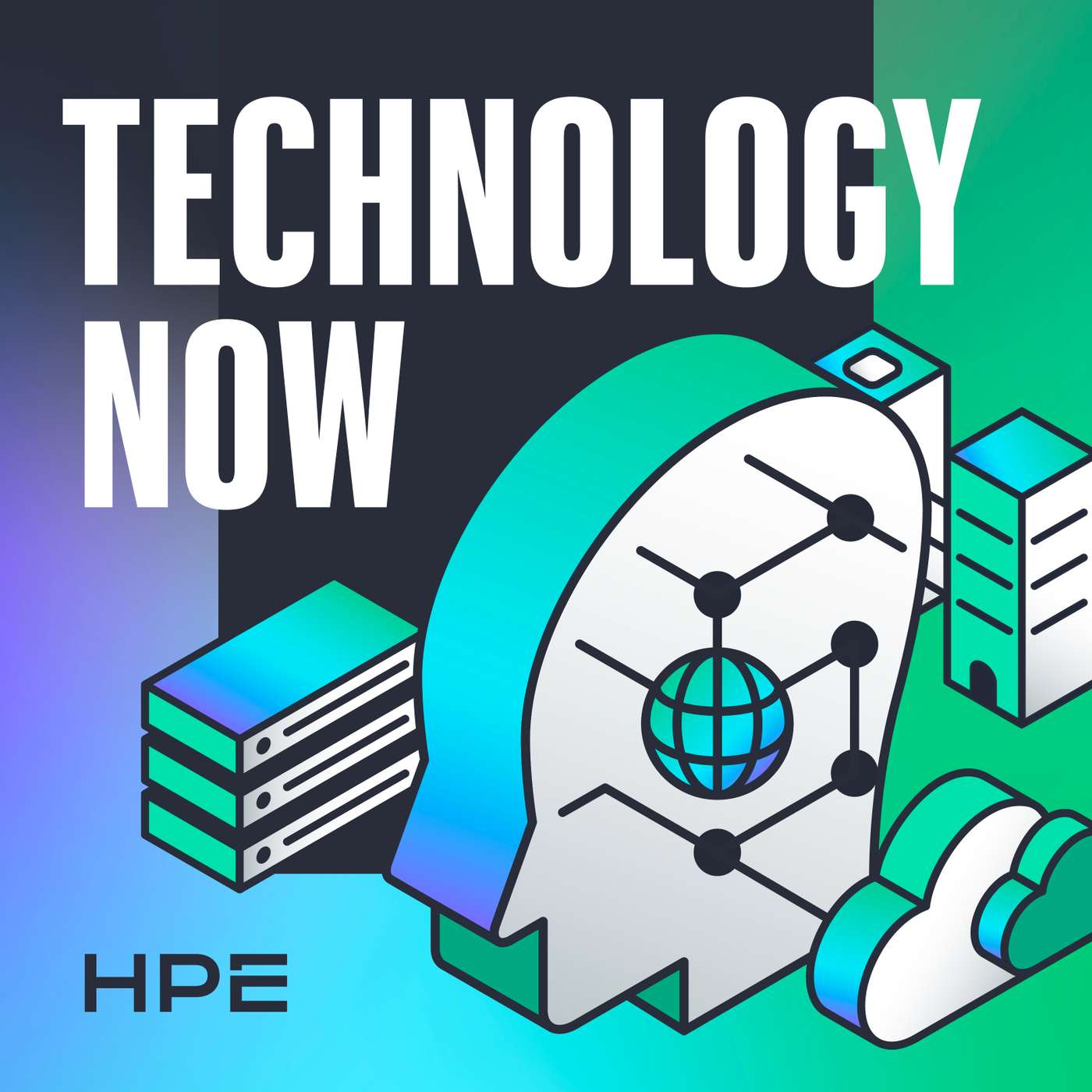 Technology NowHow do you build the world's fastest supercomputer?How do you make the world’s fastest supercomputer? This week, Technology Now dives into the world of supercomputers, and how El Capitan, the world’s largest supercomputer, was built. We will explore the software and hardware requirements as well as investigating the physical requirements needed to even be able to run a supercomputer on your premises. Bronis de Supinski, CTO of Livermore Computing at Lawrence Livermore National Laboratory, tells us more.This is Technology Now, a weekly show from Hewlett Packard Enterprise. Every week, hosts Michael Bird and Aubrey Lovell look at a story that's been maki...2025-06-1221 min
Technology NowHow do you build the world's fastest supercomputer?How do you make the world’s fastest supercomputer? This week, Technology Now dives into the world of supercomputers, and how El Capitan, the world’s largest supercomputer, was built. We will explore the software and hardware requirements as well as investigating the physical requirements needed to even be able to run a supercomputer on your premises. Bronis de Supinski, CTO of Livermore Computing at Lawrence Livermore National Laboratory, tells us more.This is Technology Now, a weekly show from Hewlett Packard Enterprise. Every week, hosts Michael Bird and Aubrey Lovell look at a story that's been maki...2025-06-1221 min Technology NowHow do you build the world's fastest supercomputer?How do you make the world’s fastest supercomputer? This week, Technology Now dives into the world of supercomputers, and how El Capitan, the world’s largest supercomputer, was built. We will explore the software and hardware requirements as well as investigating the physical requirements needed to even be able to run a supercomputer on your premises. Bronis de Supinski, CTO of Livermore Computing at Lawrence Livermore National Laboratory, tells us more.This is Technology Now, a weekly show from Hewlett Packard Enterprise. Every week, hosts Michael Bird and Aubrey Lovell look at a story that's been maki...2025-06-1221 min
Technology NowHow do you build the world's fastest supercomputer?How do you make the world’s fastest supercomputer? This week, Technology Now dives into the world of supercomputers, and how El Capitan, the world’s largest supercomputer, was built. We will explore the software and hardware requirements as well as investigating the physical requirements needed to even be able to run a supercomputer on your premises. Bronis de Supinski, CTO of Livermore Computing at Lawrence Livermore National Laboratory, tells us more.This is Technology Now, a weekly show from Hewlett Packard Enterprise. Every week, hosts Michael Bird and Aubrey Lovell look at a story that's been maki...2025-06-1221 min Big Ideas LabQuantum ComputingWhat if scientists could use the peculiar world of quantum mechanics to design solutions once thought impossible - changing how we build, heal, and communicate?At Lawrence Livermore National Laboratory, researchers are developing quantum systems that could help us do just that. These machines think differently, tapping into the strange rules of quantum mechanics to simulate atomic interactions, unlock new materials, and reveal hidden patterns in nature. In this episode, we’ll explore how quantum computers work, why they need to be colder than deep space, and what it will take to bring their full potential to li...2025-06-0321 min
Big Ideas LabQuantum ComputingWhat if scientists could use the peculiar world of quantum mechanics to design solutions once thought impossible - changing how we build, heal, and communicate?At Lawrence Livermore National Laboratory, researchers are developing quantum systems that could help us do just that. These machines think differently, tapping into the strange rules of quantum mechanics to simulate atomic interactions, unlock new materials, and reveal hidden patterns in nature. In this episode, we’ll explore how quantum computers work, why they need to be colder than deep space, and what it will take to bring their full potential to li...2025-06-0321 min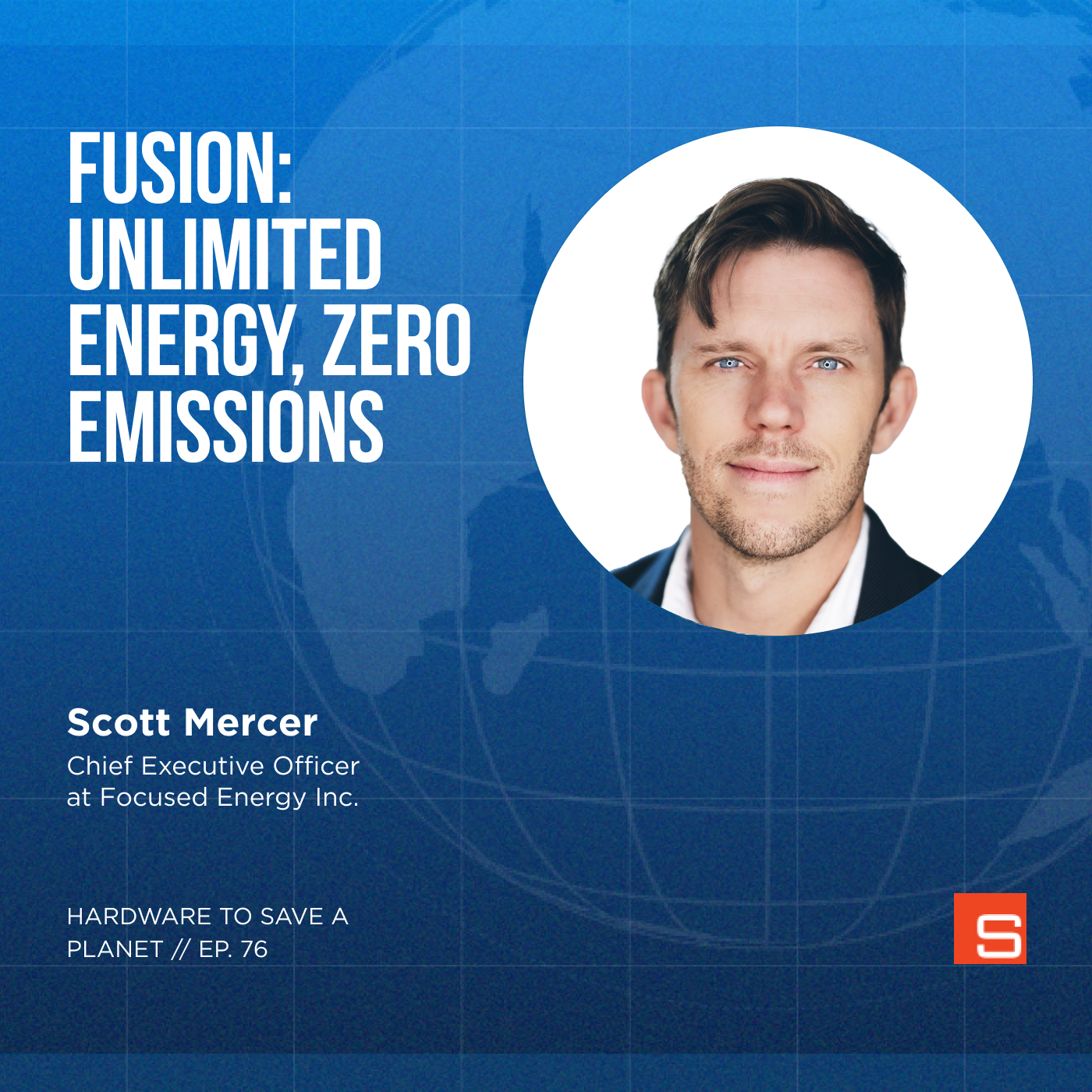 Hardware to Save a PlanetIgniting the Future: Fusion Power and the Road to Clean Energy with Scott MercerIn this episode of Hardware to Save a Planet, host Dylan Garrett talks with Scott Mercer, Founder and CEO of Focused Energy, about the future of nuclear fusion. They explore how laser-driven fusion, inspired by breakthroughs at Lawrence Livermore Labs, could offer limitless clean power by the 2030s. From physics to commercialization, Mercer shares how Focused Energy plans to bring fusion to the grid—and why this could be a game-changer for climate tech and global energy.What you will learn:How fusion energy worksThe laser-driven process that compresses deuterium-tritium fuelFocused Energy's approach, which builds upon the successful ign...2025-04-1051 min
Hardware to Save a PlanetIgniting the Future: Fusion Power and the Road to Clean Energy with Scott MercerIn this episode of Hardware to Save a Planet, host Dylan Garrett talks with Scott Mercer, Founder and CEO of Focused Energy, about the future of nuclear fusion. They explore how laser-driven fusion, inspired by breakthroughs at Lawrence Livermore Labs, could offer limitless clean power by the 2030s. From physics to commercialization, Mercer shares how Focused Energy plans to bring fusion to the grid—and why this could be a game-changer for climate tech and global energy.What you will learn:How fusion energy worksThe laser-driven process that compresses deuterium-tritium fuelFocused Energy's approach, which builds upon the successful ign...2025-04-1051 min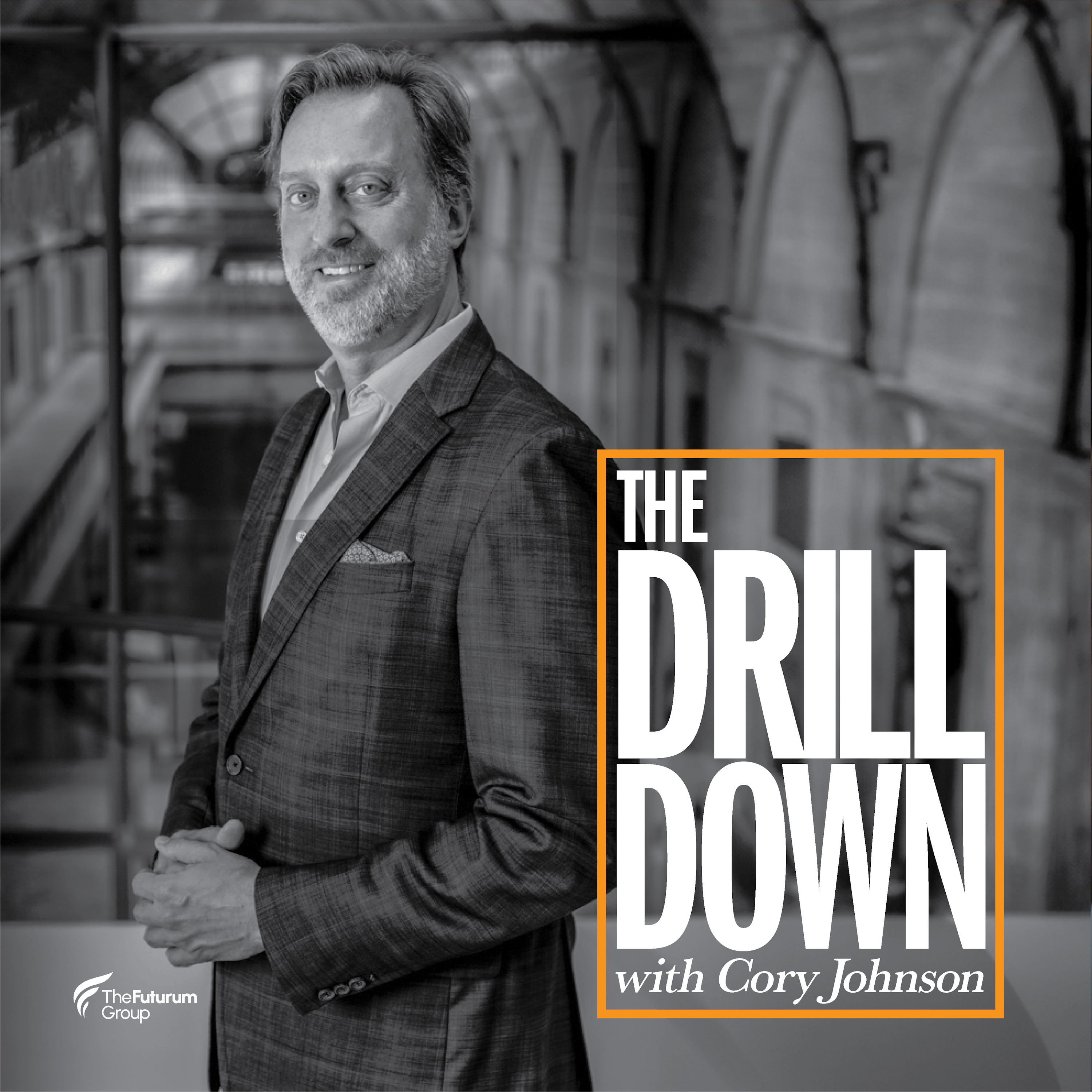 The Drill DownThe Drill Down Insider, with Lawrence Livermore National Lab’s Ian LeeSupercomputers power some of the most advanced research in the world—but securing them is no easy task. At the Elastic Public Sector Summit in Washington, D.C., Drill Down Insider spoke with Ian Lee, HPC Cybersecurity Architect at Lawrence Livermore National Laboratory, about the unique challenges of securing high-performance computing (HPC) environments. ⚡🖥️Lee breaks down how Livermore Lab ensures compliance with DOE and federal cybersecurity requirements while protecting its massive computing infrastructure. He explains why traditional security models don’t always apply to supercomputers and how open-source tools are playing a critical role in safeguar...2025-03-2505 min
The Drill DownThe Drill Down Insider, with Lawrence Livermore National Lab’s Ian LeeSupercomputers power some of the most advanced research in the world—but securing them is no easy task. At the Elastic Public Sector Summit in Washington, D.C., Drill Down Insider spoke with Ian Lee, HPC Cybersecurity Architect at Lawrence Livermore National Laboratory, about the unique challenges of securing high-performance computing (HPC) environments. ⚡🖥️Lee breaks down how Livermore Lab ensures compliance with DOE and federal cybersecurity requirements while protecting its massive computing infrastructure. He explains why traditional security models don’t always apply to supercomputers and how open-source tools are playing a critical role in safeguar...2025-03-2505 min Big Ideas LabCommunity GivingLawrence Livermore National Laboratory is celebrated for its groundbreaking science - from Fusion Ignition to safeguarding the nuclear stockpile. But there’s another story - grounded in community, connection, and a deep culture of giving. In this episode, we’ll explore how the same passion that drives scientific discovery fuels the Lab’s commitment to making a difference beyond its walls.-- Big Ideas Lab is a Mission.org original series. Executive Produced by Lacey Peace and Levi Hanusch.Sound Design, Music Edit and Mix by Daniel Brunelle. Story Ed...2025-03-0411 min
Big Ideas LabCommunity GivingLawrence Livermore National Laboratory is celebrated for its groundbreaking science - from Fusion Ignition to safeguarding the nuclear stockpile. But there’s another story - grounded in community, connection, and a deep culture of giving. In this episode, we’ll explore how the same passion that drives scientific discovery fuels the Lab’s commitment to making a difference beyond its walls.-- Big Ideas Lab is a Mission.org original series. Executive Produced by Lacey Peace and Levi Hanusch.Sound Design, Music Edit and Mix by Daniel Brunelle. Story Ed...2025-03-0411 min Big Ideas LabNARACIn the 1960s and 70s, researchers at Lawrence Livermore National Laboratory were pushing the boundaries of nuclear weapons technology. But these breakthroughs came with a daunting question: Now that nuclear technologies existed, how could the world manage their risks and keep people safe?Enter NARAC, the National Atmospheric Release Advisory Center. Built on Livermore’s expertise in nuclear physics and supercomputing, NARAC was created to predict the spread of hazardous materials in the atmosphere during emergencies. From Chernobyl to Fukushima to Three Mile Island, NARAC’s scientists have worked on some of the hardest problems of our time—...2024-11-2630 min
Big Ideas LabNARACIn the 1960s and 70s, researchers at Lawrence Livermore National Laboratory were pushing the boundaries of nuclear weapons technology. But these breakthroughs came with a daunting question: Now that nuclear technologies existed, how could the world manage their risks and keep people safe?Enter NARAC, the National Atmospheric Release Advisory Center. Built on Livermore’s expertise in nuclear physics and supercomputing, NARAC was created to predict the spread of hazardous materials in the atmosphere during emergencies. From Chernobyl to Fukushima to Three Mile Island, NARAC’s scientists have worked on some of the hardest problems of our time—...2024-11-2630 min Big Ideas LabDay in a Life of DeterrenceStrategic deterrence is the foundation of U.S. national defense, but it’s only as strong as the nuclear triad that supports it.Think of the nuclear triad—land, sea and air—as a three-legged stool that holds up the entire strategy. For this "stool" to remain steady, the weapons, systems and devices within each leg must be credible.But what does it take to ensure that credibility? And what role do the teams at Lawrence Livermore National Laboratory play in keeping the U.S. secure? Tune in to find out.--- Big I...2024-10-0827 min
Big Ideas LabDay in a Life of DeterrenceStrategic deterrence is the foundation of U.S. national defense, but it’s only as strong as the nuclear triad that supports it.Think of the nuclear triad—land, sea and air—as a three-legged stool that holds up the entire strategy. For this "stool" to remain steady, the weapons, systems and devices within each leg must be credible.But what does it take to ensure that credibility? And what role do the teams at Lawrence Livermore National Laboratory play in keeping the U.S. secure? Tune in to find out.--- Big I...2024-10-0827 min Big Ideas LabStrategic DeterrenceIn October 1962, a U-2 reconnaissance plane captured images of Soviet missile sites under construction in Cuba. What followed was a tense 13-day standoff between the US and the Soviet Union—an event that became known as the Cuban Missile Crisis.This pivotal moment in the Cold War revealed the catastrophic potential of nuclear war and the urgent need for diplomacy. Today, we're diving deep into the national security principle of strategic deterrence—a policy designed to win wars not by preparing for their inevitability, but by preventing them outright.--- Big Ideas Lab is a...2024-10-0126 min
Big Ideas LabStrategic DeterrenceIn October 1962, a U-2 reconnaissance plane captured images of Soviet missile sites under construction in Cuba. What followed was a tense 13-day standoff between the US and the Soviet Union—an event that became known as the Cuban Missile Crisis.This pivotal moment in the Cold War revealed the catastrophic potential of nuclear war and the urgent need for diplomacy. Today, we're diving deep into the national security principle of strategic deterrence—a policy designed to win wars not by preparing for their inevitability, but by preventing them outright.--- Big Ideas Lab is a...2024-10-0126 min Big Ideas LabSupercomputingIn the 1960s, a quiet revolution was taking shape behind the scenes—one that would eventually touch every corner of our modern world. As Cold War tensions rose and the future grew more uncertain, scientists embarked on a mission to harness a new kind of power: high performance computing. What began as an effort to solve complex nuclear challenges would soon transform the way we think, work, and live. From early machines like the UNIVAC-1, nicknamed an "oversized toaster," to today’s supercomputers capable of simulating entire worlds, this episode explores how Lawrence Livermore National Laboratory’s relentl...2024-09-2436 min
Big Ideas LabSupercomputingIn the 1960s, a quiet revolution was taking shape behind the scenes—one that would eventually touch every corner of our modern world. As Cold War tensions rose and the future grew more uncertain, scientists embarked on a mission to harness a new kind of power: high performance computing. What began as an effort to solve complex nuclear challenges would soon transform the way we think, work, and live. From early machines like the UNIVAC-1, nicknamed an "oversized toaster," to today’s supercomputers capable of simulating entire worlds, this episode explores how Lawrence Livermore National Laboratory’s relentl...2024-09-2436 min Science Straight UpQuantum Simulations of the Origins of Life: Life-Giving Molecules From Planetary Impacts--Dr. Nir Goldman, Lawrence Livermore LaboratoryBefore there was life on Earth, there was something called "the period of maximum bombardment" when comets, meteors and other space objects crashed into the planet. Some of those carried materials necessary for life to emerge. Dr. Nir Goldman of Lawrence Livermore has been using computer simulations to investigate the hypothesis that some of these collisions synthesized the building blocks of life. He spoke at a "town talk" sponsored by Telluride Science. Moderators: award-winning broadcast journalists Judy Muller and George Lewis. 2024-09-1822 min
Science Straight UpQuantum Simulations of the Origins of Life: Life-Giving Molecules From Planetary Impacts--Dr. Nir Goldman, Lawrence Livermore LaboratoryBefore there was life on Earth, there was something called "the period of maximum bombardment" when comets, meteors and other space objects crashed into the planet. Some of those carried materials necessary for life to emerge. Dr. Nir Goldman of Lawrence Livermore has been using computer simulations to investigate the hypothesis that some of these collisions synthesized the building blocks of life. He spoke at a "town talk" sponsored by Telluride Science. Moderators: award-winning broadcast journalists Judy Muller and George Lewis. 2024-09-1822 min Big Ideas LabHistory of the LabIn the wake of the Soviet Union's first atomic bomb test, the looming threat of nuclear war sent shockwaves through the United States. Air raid sirens blared, bomb shelters were built, and schoolchildren were drilled in "Duck and Cover" tactics. But the U.S. government knew preparation wasn’t enough—they needed a breakthrough, something far more powerful to shift the balance of power.Their answer was nuclear deterrence: the idea that the best protection against a nuclear attack is the fear of retaliation. This sparked a race to develop a weapon so powerful that the Soviets woul...2024-09-1721 min
Big Ideas LabHistory of the LabIn the wake of the Soviet Union's first atomic bomb test, the looming threat of nuclear war sent shockwaves through the United States. Air raid sirens blared, bomb shelters were built, and schoolchildren were drilled in "Duck and Cover" tactics. But the U.S. government knew preparation wasn’t enough—they needed a breakthrough, something far more powerful to shift the balance of power.Their answer was nuclear deterrence: the idea that the best protection against a nuclear attack is the fear of retaliation. This sparked a race to develop a weapon so powerful that the Soviets woul...2024-09-1721 min Conservative Hippie PodcastFusion Future – The PlanFusion Future - The Plan
What if I told you there was a plan to eliminate the effects of inflation, maintain King Dollar as the global benchmark in currency, onshore manufacturing back to the United States, and launch the Western hemisphere into a new era of prosperity and peace? And what if I told you all this could be accomplished with one technological program executed by the incoming Trump Administration? All the pieces to our Fusion Future are in place.
Lawrence Livermore Labs created fusion ignition in December of 2022. The test produced more energy output...2024-08-0535 min
Conservative Hippie PodcastFusion Future – The PlanFusion Future - The Plan
What if I told you there was a plan to eliminate the effects of inflation, maintain King Dollar as the global benchmark in currency, onshore manufacturing back to the United States, and launch the Western hemisphere into a new era of prosperity and peace? And what if I told you all this could be accomplished with one technological program executed by the incoming Trump Administration? All the pieces to our Fusion Future are in place.
Lawrence Livermore Labs created fusion ignition in December of 2022. The test produced more energy output...2024-08-0535 min Eye On A.I.#197: AI, Fusion, and National Security with Lawrence Livermore’s Brian SpearsThis episode is sponsored by SysAid. Get 20% off SysAid Copilot using this link: https://www.sysaid.com/lp/sysaid-copilot-s?utm_source=youtube&utm_medium=cpc&utm_campaign=short-craig In this episode of the Eye on AI podcast, join us as we delve into the cutting-edge world of AI and high-performance computing with Brian Spears, Director of the AI Innovation Incubator at Lawrence Livermore National Laboratory. Brian shares his experience in driving AI into national security science and managing the nation’s nuclear stockpile. With a PhD in...2024-07-1356 min
Eye On A.I.#197: AI, Fusion, and National Security with Lawrence Livermore’s Brian SpearsThis episode is sponsored by SysAid. Get 20% off SysAid Copilot using this link: https://www.sysaid.com/lp/sysaid-copilot-s?utm_source=youtube&utm_medium=cpc&utm_campaign=short-craig In this episode of the Eye on AI podcast, join us as we delve into the cutting-edge world of AI and high-performance computing with Brian Spears, Director of the AI Innovation Incubator at Lawrence Livermore National Laboratory. Brian shares his experience in driving AI into national security science and managing the nation’s nuclear stockpile. With a PhD in...2024-07-1356 min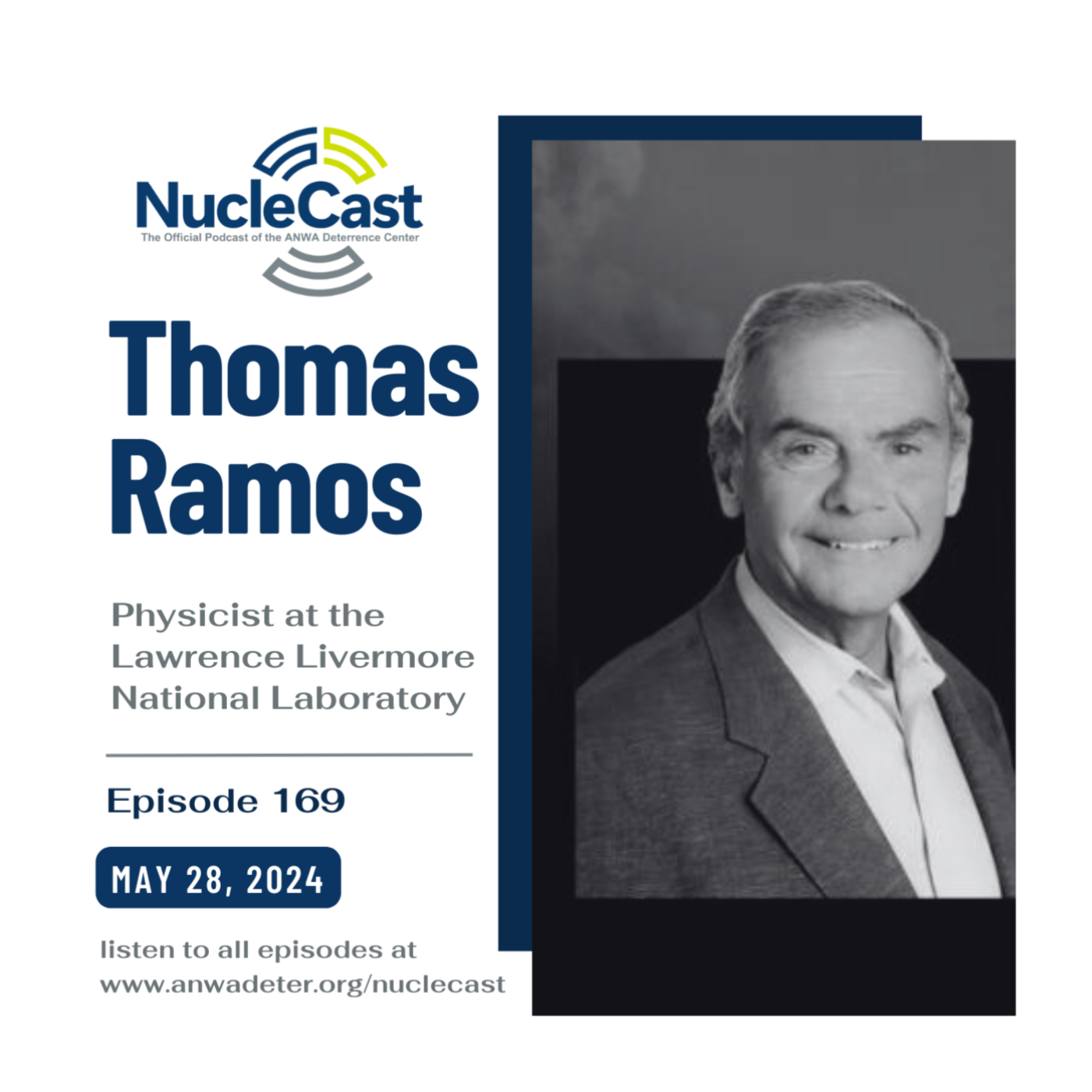 NucleCastThomas Ramos - The Importance of Capturing History to Inform Current ThreatsIn this episode of NucleCast, Adam interviews Tom Ramos, a physicist at Lawrence Livermore National Lab, about the relevance of the early years of the Cold War to today's national security challenges. They discuss the lessons learned from the past and how they can inform our approach to handling current threats from Russia and China. They emphasize the importance of capturing and memorializing the history of this period and the need for strong policy analysts and integrated collaboration between the military, think tanks, and scientists. They also highlight the need for a sense of urgency and recognition of the...2024-05-2833 min
NucleCastThomas Ramos - The Importance of Capturing History to Inform Current ThreatsIn this episode of NucleCast, Adam interviews Tom Ramos, a physicist at Lawrence Livermore National Lab, about the relevance of the early years of the Cold War to today's national security challenges. They discuss the lessons learned from the past and how they can inform our approach to handling current threats from Russia and China. They emphasize the importance of capturing and memorializing the history of this period and the need for strong policy analysts and integrated collaboration between the military, think tanks, and scientists. They also highlight the need for a sense of urgency and recognition of the...2024-05-2833 min Grant Lawrence SuperfeedDirty Windshields - Where Are They Now?A fully updated and fascinating "where are they now" of all the main players in "Dirty Windshields", including members of the Smugglers past and present, beloved roadie Ska-T, Nardwuar the Human Serviette, Larry Livermore from Lookout Records and more. 2024-05-2637 min
Grant Lawrence SuperfeedDirty Windshields - Where Are They Now?A fully updated and fascinating "where are they now" of all the main players in "Dirty Windshields", including members of the Smugglers past and present, beloved roadie Ska-T, Nardwuar the Human Serviette, Larry Livermore from Lookout Records and more. 2024-05-2637 min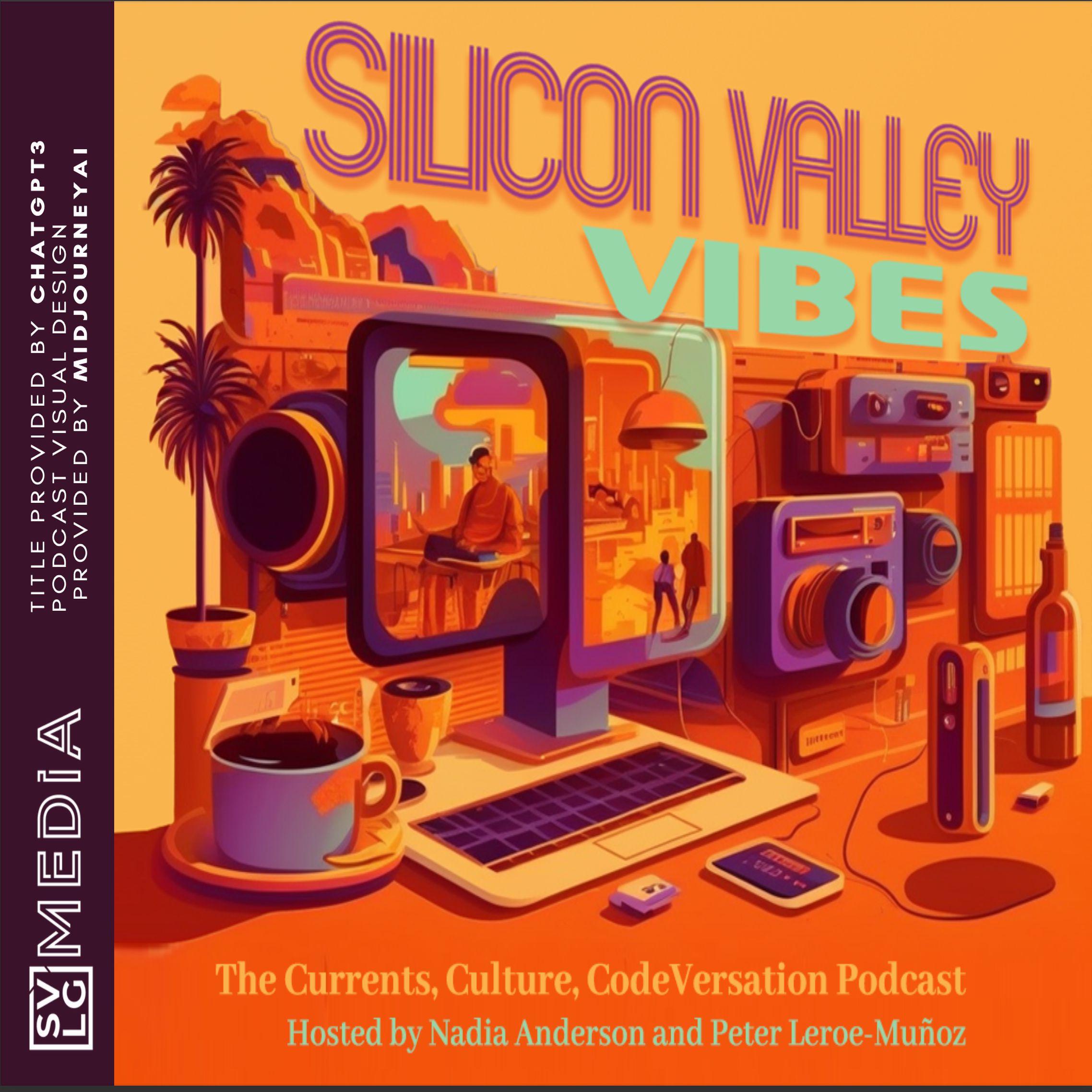 Silicon Valley VibesEpisode 14: Matthew Garrett and Lawrence Livermore National LaboratoryOn this episode of Silicon Valley Vibes, Matthew Garrett, the Director of Innovation and Partnerships Office for Lawrence Livermore National Laboratory talks about some of the incredible innovations taking place at the Lab, such as high performance computing, lasers, fusion, manufacturing, diagnostic tools, and many many more….2024-05-1526 min
Silicon Valley VibesEpisode 14: Matthew Garrett and Lawrence Livermore National LaboratoryOn this episode of Silicon Valley Vibes, Matthew Garrett, the Director of Innovation and Partnerships Office for Lawrence Livermore National Laboratory talks about some of the incredible innovations taking place at the Lab, such as high performance computing, lasers, fusion, manufacturing, diagnostic tools, and many many more….2024-05-1526 min Climate BreakRERUN: The Clean Energy Potential of Nuclear Fusion, with Annie KritcherWhat is nuclear fusion?Nuclear fusion produces energy by fusing atoms together. Atomic cores (nuclei) merge together to form a heavier—though unstable—nucleus, releasing mass to regain stability. This mass release corresponds to an energy release, given Einstein’s equation E=mc2, which says in part that mass and energy can be converted into each other. The sun, along with all other stars, uses nuclear fusion to generate energy, which is released as heat and light. The 2022 Fusion Breakthrough In late 2022, scientists led by Dr. Annie Kritcher at the Lawrence Livermore National Laborato...2024-01-1601 min
Climate BreakRERUN: The Clean Energy Potential of Nuclear Fusion, with Annie KritcherWhat is nuclear fusion?Nuclear fusion produces energy by fusing atoms together. Atomic cores (nuclei) merge together to form a heavier—though unstable—nucleus, releasing mass to regain stability. This mass release corresponds to an energy release, given Einstein’s equation E=mc2, which says in part that mass and energy can be converted into each other. The sun, along with all other stars, uses nuclear fusion to generate energy, which is released as heat and light. The 2022 Fusion Breakthrough In late 2022, scientists led by Dr. Annie Kritcher at the Lawrence Livermore National Laborato...2024-01-1601 min The Buzz with ACT-IACNuclear Fusion: Energy of the Future?In December 2022, scientists at the National Ignition Facility, of NIF, at Lawrence Livermore National Laboratory did something that had never happened before on Earth – controlled fusion ignition.What is nuclear fusion and why does it matter? This week on The Buzz, we'll be talking about why last year's experiment represents an enormous breakthrough in the future of energy, by hearing from some of the public sector scientists directly involved.Featuring:Alex Zylstra - Experimental Physicist at Lawrence Livermore National LaboratoryJohn Edwards - Inertial Confinement Fusion Program Director at Law...2023-07-1227 min
The Buzz with ACT-IACNuclear Fusion: Energy of the Future?In December 2022, scientists at the National Ignition Facility, of NIF, at Lawrence Livermore National Laboratory did something that had never happened before on Earth – controlled fusion ignition.What is nuclear fusion and why does it matter? This week on The Buzz, we'll be talking about why last year's experiment represents an enormous breakthrough in the future of energy, by hearing from some of the public sector scientists directly involved.Featuring:Alex Zylstra - Experimental Physicist at Lawrence Livermore National LaboratoryJohn Edwards - Inertial Confinement Fusion Program Director at Law...2023-07-1227 min Iran Watch ListenIran’s Potential Path from Breakout to BombIn this episode of Iran Watch Listen, we sat down with Dr. Bruce Goodwin, an expert on nuclear weapons design and testing. We discussed the steps required to build a nuclear weapon and what is publicly known about Iran’s weaponization efforts to date. The conversation took place on May 3 and was hosted by Valerie Lincy, Executive Director at the Wisconsin Project on Nuclear Arms Control, and John Krzyzaniak, a Research Associate at the Wisconsin Project. Expert Bio Bruce Goodwin is a retired senior fellow at the Center for Global Security Research at the Lawrence Li...2023-05-1735 min
Iran Watch ListenIran’s Potential Path from Breakout to BombIn this episode of Iran Watch Listen, we sat down with Dr. Bruce Goodwin, an expert on nuclear weapons design and testing. We discussed the steps required to build a nuclear weapon and what is publicly known about Iran’s weaponization efforts to date. The conversation took place on May 3 and was hosted by Valerie Lincy, Executive Director at the Wisconsin Project on Nuclear Arms Control, and John Krzyzaniak, a Research Associate at the Wisconsin Project. Expert Bio Bruce Goodwin is a retired senior fellow at the Center for Global Security Research at the Lawrence Li...2023-05-1735 min Climate BreakThe Clean Energy Potential of Nuclear Fusion, with Annie KritcherWhat is nuclear fusion?Nuclear fusion produces energy by fusing atoms together. Atomic cores (nuclei) merge together to form a heavier—though unstable—nucleus, releasing mass to regain stability. This mass release corresponds to an energy release, given Einstein’s equation E=mc2, which says in part that mass and energy can be converted into each other. The sun, along with all other stars, uses nuclear fusion to generate energy, which is released as heat and light. The 2022 Fusion Breakthrough In late 2022, scientists led by Dr. Annie Kritcher at the Lawrence Livermore National Laborato...2023-05-1601 min
Climate BreakThe Clean Energy Potential of Nuclear Fusion, with Annie KritcherWhat is nuclear fusion?Nuclear fusion produces energy by fusing atoms together. Atomic cores (nuclei) merge together to form a heavier—though unstable—nucleus, releasing mass to regain stability. This mass release corresponds to an energy release, given Einstein’s equation E=mc2, which says in part that mass and energy can be converted into each other. The sun, along with all other stars, uses nuclear fusion to generate energy, which is released as heat and light. The 2022 Fusion Breakthrough In late 2022, scientists led by Dr. Annie Kritcher at the Lawrence Livermore National Laborato...2023-05-1601 min Security Cleared Jobs: Who's Hiring & HowLawrence Livermore National Laboratory | Frank TriguerosLLNL hiring needs, while focused on scientists and engineers, are quite broad as the Lab is a self-contained city with nearly 9k employees. Frank Trigueros, Talent Acquisition Group Leader, talks why cleared professionals should never burn bridges, SkillBridge opportunities, internships, and more.“You can have a multi-dimensional career at the laboratory. You may come in and start doing one thing, then after a couple of years there could be another project that could be something completely different, where you're still leveraging maybe a component of your skills. Or you've learned things and drawn knowledge through your time at...2023-05-1022 min
Security Cleared Jobs: Who's Hiring & HowLawrence Livermore National Laboratory | Frank TriguerosLLNL hiring needs, while focused on scientists and engineers, are quite broad as the Lab is a self-contained city with nearly 9k employees. Frank Trigueros, Talent Acquisition Group Leader, talks why cleared professionals should never burn bridges, SkillBridge opportunities, internships, and more.“You can have a multi-dimensional career at the laboratory. You may come in and start doing one thing, then after a couple of years there could be another project that could be something completely different, where you're still leveraging maybe a component of your skills. Or you've learned things and drawn knowledge through your time at...2023-05-1022 min Commonwealth Club of California PodcastOur Fusion Future—Lawrence Livermore Director Kim BudilIn late 2022, scientists at Lawrence Livermore National Laboratory made a long-sought breakthrough, achieving self-sustaining “fusion ignition” for the first time and generating breakeven energy. Supporters see fusion as a game changer for production of unlimited clean energy that can help to address climate change globally. Please join us for a conversation with Dr. Kimberly Budil, director of Lawrence Livermore, about the significance of this achievement. Dr. Budil is the 13th director of Lawrence Livermore. A physicist, she is an expert on high-power, ultra-fast lasers. She has held previous positions at the Department of Homeland Security, the Department of Def...2023-04-0458 min
Commonwealth Club of California PodcastOur Fusion Future—Lawrence Livermore Director Kim BudilIn late 2022, scientists at Lawrence Livermore National Laboratory made a long-sought breakthrough, achieving self-sustaining “fusion ignition” for the first time and generating breakeven energy. Supporters see fusion as a game changer for production of unlimited clean energy that can help to address climate change globally. Please join us for a conversation with Dr. Kimberly Budil, director of Lawrence Livermore, about the significance of this achievement. Dr. Budil is the 13th director of Lawrence Livermore. A physicist, she is an expert on high-power, ultra-fast lasers. She has held previous positions at the Department of Homeland Security, the Department of Def...2023-04-0458 min Progress, Potential, and Possibilities Podcast / ShowDr. Heather Whitley, Ph.D - High Energy Density Science - Weapons & Complex Integration Directorate - Lawrence Livermore National LaboratorySend us a textDr. Heather Whitley, Ph.D. is Associate Program Director for High Energy Density Science ( https://heds-center.llnl.gov/ ), Weapons and Complex Integration Directorate, at the Lawrence Livermore National Laboratory (LLNL), where she is responsible for providing technical oversight and management of the design, execution, and analysis of experiments at the National Ignition Facility and other laser programs. Prior to this role, Dr. Whitley served as a detailee on assignment to the National Nuclear Security Administration (NNSA) Defense Programs Office of Experimental Sciences. Dr. Whitley completed her graduate studies of quantum systems at the...2023-03-3144 min
Progress, Potential, and Possibilities Podcast / ShowDr. Heather Whitley, Ph.D - High Energy Density Science - Weapons & Complex Integration Directorate - Lawrence Livermore National LaboratorySend us a textDr. Heather Whitley, Ph.D. is Associate Program Director for High Energy Density Science ( https://heds-center.llnl.gov/ ), Weapons and Complex Integration Directorate, at the Lawrence Livermore National Laboratory (LLNL), where she is responsible for providing technical oversight and management of the design, execution, and analysis of experiments at the National Ignition Facility and other laser programs. Prior to this role, Dr. Whitley served as a detailee on assignment to the National Nuclear Security Administration (NNSA) Defense Programs Office of Experimental Sciences. Dr. Whitley completed her graduate studies of quantum systems at the...2023-03-3144 min Progress, Potential, and Possibilities Podcast / ShowDr. Annie Kritcher, Ph.D. - National Ignition Facility - LLNL - Tapping The Power Of The StarsSend us a textDr. Andrea (Annie) Kritcher, Ph.D. is a nuclear engineer and physicist who works at the Lawrence Livermore National Laboratory ( https://www.llnl.gov/ ). She is the design lead of the HYBRID-E capsule technology within Lawrence Livermore’s Inertial Confinement Fusion (ICF) program, and is a member of the ICF leadership team and lead designer for shot N210808, at their National Ignition Facility, a recent experiment that heralded a significant step towards a fusion break-even target. She was elected Fellow of the American Physical Society in 2022. Dr. Kritcher was first employed at Lawrence Li...2023-03-2735 min
Progress, Potential, and Possibilities Podcast / ShowDr. Annie Kritcher, Ph.D. - National Ignition Facility - LLNL - Tapping The Power Of The StarsSend us a textDr. Andrea (Annie) Kritcher, Ph.D. is a nuclear engineer and physicist who works at the Lawrence Livermore National Laboratory ( https://www.llnl.gov/ ). She is the design lead of the HYBRID-E capsule technology within Lawrence Livermore’s Inertial Confinement Fusion (ICF) program, and is a member of the ICF leadership team and lead designer for shot N210808, at their National Ignition Facility, a recent experiment that heralded a significant step towards a fusion break-even target. She was elected Fellow of the American Physical Society in 2022. Dr. Kritcher was first employed at Lawrence Li...2023-03-2735 min The San Francisco ExperienceWhat the Fusion break through means. Talking with Professor Lee Bernstein of UC Berkeley and the Nuclear Data Group Leader at the Lawrence Berkeley National Laboratory.In December 2022, nuclear fusion ignition occurred at the Lawrence Livermore National Lab. Physicists have pursued the technology to achieve such a break through for decades. Nuclear fusion power promises limitless, clean energy. It is the energy that fuels the sun and the stars. 2023-01-2641 min
The San Francisco ExperienceWhat the Fusion break through means. Talking with Professor Lee Bernstein of UC Berkeley and the Nuclear Data Group Leader at the Lawrence Berkeley National Laboratory.In December 2022, nuclear fusion ignition occurred at the Lawrence Livermore National Lab. Physicists have pursued the technology to achieve such a break through for decades. Nuclear fusion power promises limitless, clean energy. It is the energy that fuels the sun and the stars. 2023-01-2641 min ECO CHICAmerica's Historic Nuclear Fusion Breakthrough | Dr. Tammy Ma, Lawrence Livermore National Laboratory210: The news of a major nuclear fusion breakthrough seemed to break the internet last month - we've all got questions, and we're all so excited about this new potential renewable energy source. I'm deeply honored to be joined by Dr. Tammy Ma, Lead Scientist at Lawrence Livermore National Laboratory's National Ignition Facility, to discuss this scientific milestone. Dr. Ma explains the significance of this ignition reaction for the scientific and energy communities, challenges to scale, and the incredible potential benefits of energy access worldwide.Dr. Tammy Ma earned her bachelor's degree in aerospace engineering...2023-01-2143 min
ECO CHICAmerica's Historic Nuclear Fusion Breakthrough | Dr. Tammy Ma, Lawrence Livermore National Laboratory210: The news of a major nuclear fusion breakthrough seemed to break the internet last month - we've all got questions, and we're all so excited about this new potential renewable energy source. I'm deeply honored to be joined by Dr. Tammy Ma, Lead Scientist at Lawrence Livermore National Laboratory's National Ignition Facility, to discuss this scientific milestone. Dr. Ma explains the significance of this ignition reaction for the scientific and energy communities, challenges to scale, and the incredible potential benefits of energy access worldwide.Dr. Tammy Ma earned her bachelor's degree in aerospace engineering...2023-01-2143 min Titans Of Nuclear | Interviewing World Experts on Nuclear EnergyEp 378: Tammy Ma - Lead, Inertial Fusion Initiative, Lawrence Livermore National Lab1) Tammy’s scientific background and how an LLNL outreach event influenced the career trajectory of her highschool self 2) A deep dive into the National Ignition Facility and some of the momentous experiments Tammy has been a part of 3) An explanation of fusion reactions, lasers, and the various components involved in the recent fusion breakthrough 4) Lawrence Livermore’s mission to create a fusion industry that is equitable, diverse, and just2023-01-1854 min
Titans Of Nuclear | Interviewing World Experts on Nuclear EnergyEp 378: Tammy Ma - Lead, Inertial Fusion Initiative, Lawrence Livermore National Lab1) Tammy’s scientific background and how an LLNL outreach event influenced the career trajectory of her highschool self 2) A deep dive into the National Ignition Facility and some of the momentous experiments Tammy has been a part of 3) An explanation of fusion reactions, lasers, and the various components involved in the recent fusion breakthrough 4) Lawrence Livermore’s mission to create a fusion industry that is equitable, diverse, and just2023-01-1854 min Energy Cast158 | Fusion First | Lawrence Livermore Nat’l LabWe discuss the historic fusion announcement with Tammy Ma, lead for the Inertial Fusion Energy Initiative at Lawrence Livermore National Laboratory, where the breakthrough was achieved. For pictures and more info, visit http://www.energy-cast.com/158-nif.html2023-01-1625 min
Energy Cast158 | Fusion First | Lawrence Livermore Nat’l LabWe discuss the historic fusion announcement with Tammy Ma, lead for the Inertial Fusion Energy Initiative at Lawrence Livermore National Laboratory, where the breakthrough was achieved. For pictures and more info, visit http://www.energy-cast.com/158-nif.html2023-01-1625 min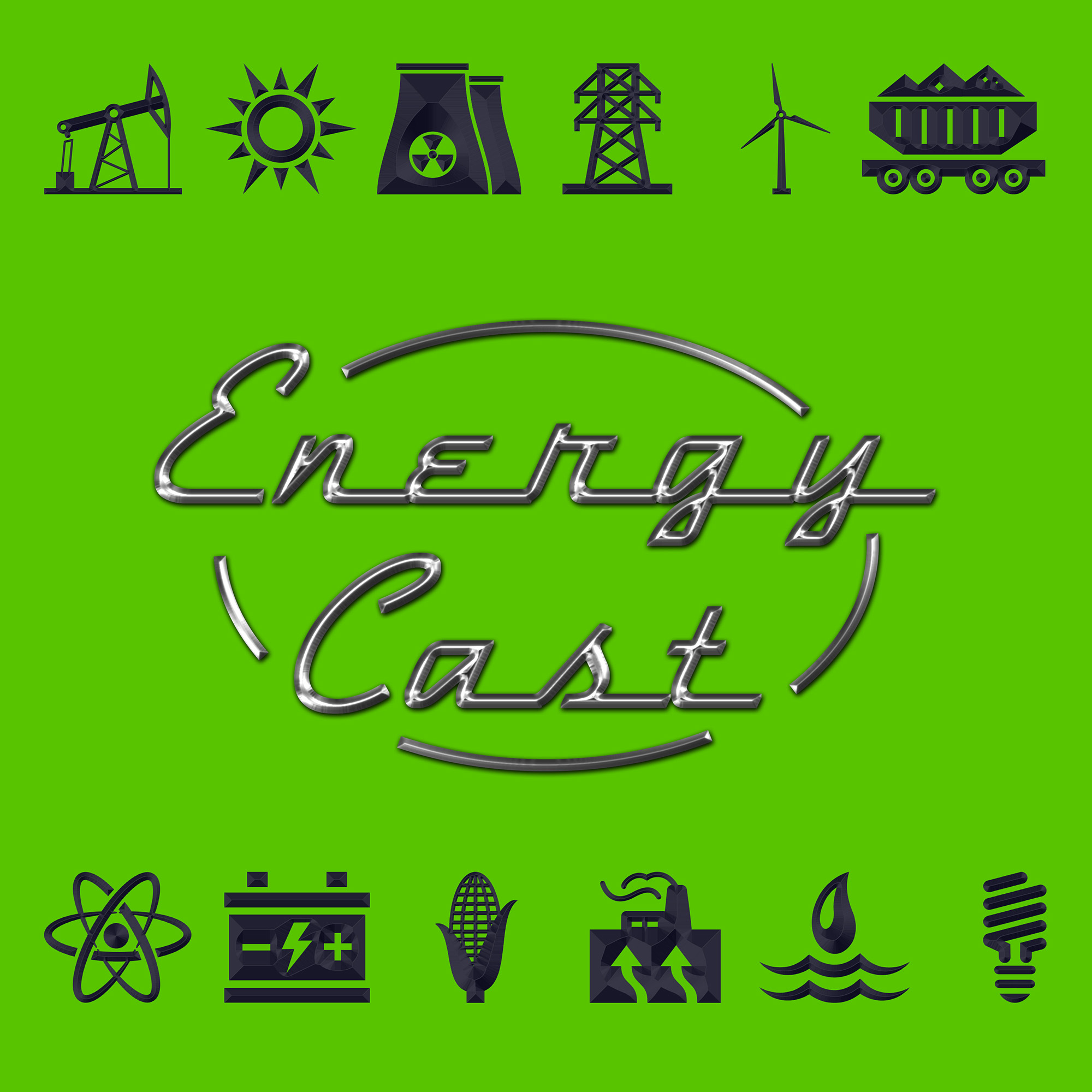 Energy Cast158 | Fusion First | Lawrence Livermore Nat’l LabWe discuss the historic fusion announcement with Tammy Ma, lead for the Inertial Fusion Energy Initiative at Lawrence Livermore National Laboratory. For pictures and more info, visit http://www.energy-cast.com/158-nif.html2023-01-1625 min
Energy Cast158 | Fusion First | Lawrence Livermore Nat’l LabWe discuss the historic fusion announcement with Tammy Ma, lead for the Inertial Fusion Energy Initiative at Lawrence Livermore National Laboratory. For pictures and more info, visit http://www.energy-cast.com/158-nif.html2023-01-1625 min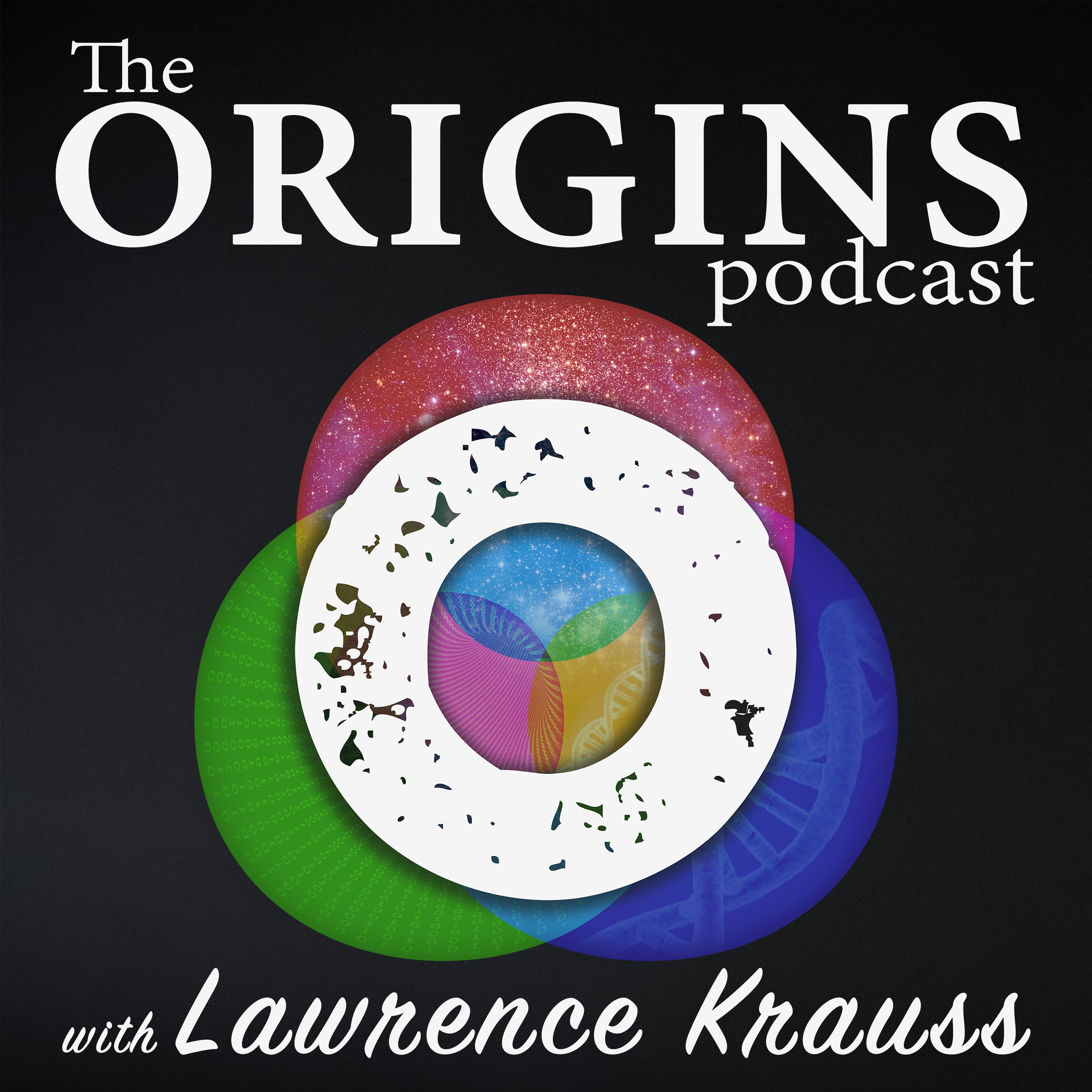 The Origins Podcast with Lawrence KraussHoliday Edition Part 2, Science Matters: How the Universe Made your Holiday GiftsIn December it was announced that the Lawrence Livermore National Laboratory National Ignition facility has achieved its first goal of “Ignition”, in which 192 powerful lasers focused on a small pellet of fuel led to a sustained fusion reaction for a fraction of a second that released more energy than it received from the incident laser light. Following on requests from many readers, I describe the science behind this experiment, and the wishful thinking associated with it, regarding the possible use of fusion as an unlimited power source for humanity in the future. This special holiday edit...2022-12-2930 min
The Origins Podcast with Lawrence KraussHoliday Edition Part 2, Science Matters: How the Universe Made your Holiday GiftsIn December it was announced that the Lawrence Livermore National Laboratory National Ignition facility has achieved its first goal of “Ignition”, in which 192 powerful lasers focused on a small pellet of fuel led to a sustained fusion reaction for a fraction of a second that released more energy than it received from the incident laser light. Following on requests from many readers, I describe the science behind this experiment, and the wishful thinking associated with it, regarding the possible use of fusion as an unlimited power source for humanity in the future. This special holiday edit...2022-12-2930 min Pepite di ScienzaFusione nucleare al Lawrence Livermore Lab: è davvero una svolta storica?Il mio libro "Capire il tempo e lo spazio": https://amzn.to/2UYMToT
Il mio libro "A cavallo di un protone": https://amzn.to/2LIkz5x
In questo video scopriamo la verità sulla notizia del 13 dicembre del Lawrence Livermore National Laboratory (LLNL), che ha annunciato una svolta storica nella ricerca della fusione nucleare e di aver ottenuto più energia dalla fusione nucleare di quella con cui si è scatenata la reazione nucleare. Oggi facciamo chiarezza su due punti e vi fornisco anche un dato che quasi tutti occultano, ma che è fondamentale per capire la notizia.
Il...2022-12-1410 min
Pepite di ScienzaFusione nucleare al Lawrence Livermore Lab: è davvero una svolta storica?Il mio libro "Capire il tempo e lo spazio": https://amzn.to/2UYMToT
Il mio libro "A cavallo di un protone": https://amzn.to/2LIkz5x
In questo video scopriamo la verità sulla notizia del 13 dicembre del Lawrence Livermore National Laboratory (LLNL), che ha annunciato una svolta storica nella ricerca della fusione nucleare e di aver ottenuto più energia dalla fusione nucleare di quella con cui si è scatenata la reazione nucleare. Oggi facciamo chiarezza su due punti e vi fornisco anche un dato che quasi tutti occultano, ma che è fondamentale per capire la notizia.
Il...2022-12-1410 min Composites WeeklyHow ‘Second Skin’ Suits Could Protect Future Soldiers From Chemical, Biological AgentsThis week, I share an interview I did with Dr. Francesco Fornasiero of Lawrence Livermore National Laboratory discussing some of their work in developing a material that could protect soldiers from biological and chemical agents. The work includes fabricating flexible polymeric membranes with aligned carbon nanotube channels as moisture conductive pores. The size of these pores is 5,000 times smaller than the width of a human hair. This material is the first key component of futuristic smart uniforms that also can respond to and protect soldiers and civilians from environmental chemical hazards. Lawrence Livermore...2022-09-1219 min
Composites WeeklyHow ‘Second Skin’ Suits Could Protect Future Soldiers From Chemical, Biological AgentsThis week, I share an interview I did with Dr. Francesco Fornasiero of Lawrence Livermore National Laboratory discussing some of their work in developing a material that could protect soldiers from biological and chemical agents. The work includes fabricating flexible polymeric membranes with aligned carbon nanotube channels as moisture conductive pores. The size of these pores is 5,000 times smaller than the width of a human hair. This material is the first key component of futuristic smart uniforms that also can respond to and protect soldiers and civilians from environmental chemical hazards. Lawrence Livermore...2022-09-1219 min The Rational View podcast with Dr. Al ScottLaser Fusion Ignition with Drs. Hurricane and ZylstraIn this episode I’m starting to explore another interesting scientific topic that has recently made a big media splash—nuclear fusion. For decades the promise of nuclear fusion has been held out as the ultimate in clean energy sources—the same energy as the sun, with no transuranic radioactive waste stream. Just fusing hydrogen together to make helium and boundless energy. The problem is that it is very difficult to simulate the sun. Even in the core of the sun where temperatures are measured in millions of degrees, and the pressure is higher than anywhere in the solar system, fu...2022-09-0346 min
The Rational View podcast with Dr. Al ScottLaser Fusion Ignition with Drs. Hurricane and ZylstraIn this episode I’m starting to explore another interesting scientific topic that has recently made a big media splash—nuclear fusion. For decades the promise of nuclear fusion has been held out as the ultimate in clean energy sources—the same energy as the sun, with no transuranic radioactive waste stream. Just fusing hydrogen together to make helium and boundless energy. The problem is that it is very difficult to simulate the sun. Even in the core of the sun where temperatures are measured in millions of degrees, and the pressure is higher than anywhere in the solar system, fu...2022-09-0346 min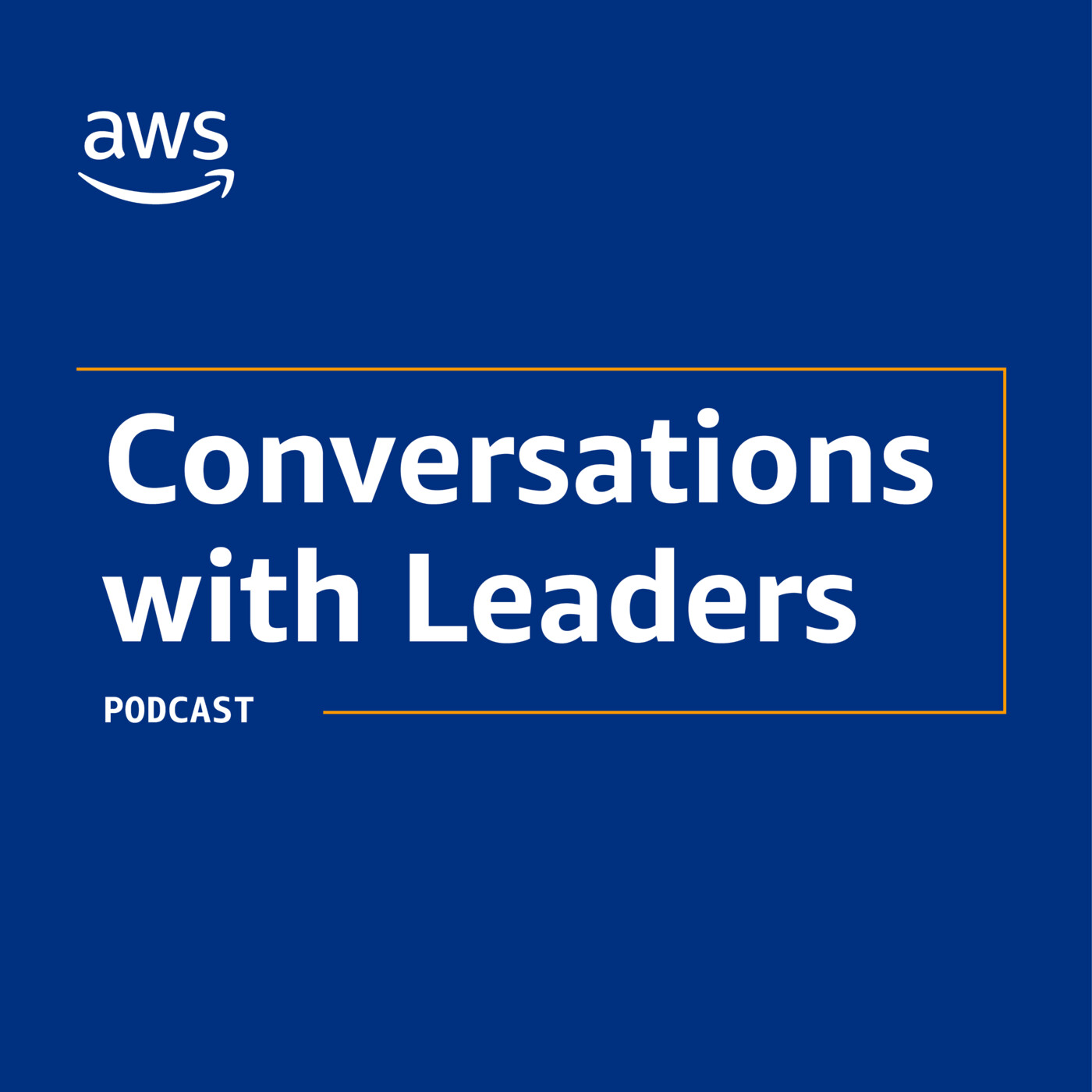 AWS Executive Insights#103: Science & Cloud Technology | Robyne Teslich, Deputy CIO for Cloud Transformation, Lawrence Livermore National LaboratoryRobyne Teslich, the Deputy Chief Information Officer for Cloud Transformation at Lawrence Livermore National Laboratory, sits down with us to talk about the complexities of migrating to the cloud and the added complexity of contracts with the public sector. Hear Robyne talk about why leaders should embrace cloud transformation and her approach to changes at a massive scale.2022-05-0519 min
AWS Executive Insights#103: Science & Cloud Technology | Robyne Teslich, Deputy CIO for Cloud Transformation, Lawrence Livermore National LaboratoryRobyne Teslich, the Deputy Chief Information Officer for Cloud Transformation at Lawrence Livermore National Laboratory, sits down with us to talk about the complexities of migrating to the cloud and the added complexity of contracts with the public sector. Hear Robyne talk about why leaders should embrace cloud transformation and her approach to changes at a massive scale.2022-05-0519 min Grant Lawrence SuperfeedDirty Windshields - Ch 29 - Selling The SizzleThe Smugglers make their most popular album with Mass Giorgini, plus the band hires infamous roadie Ska-T while embarking on the first wildly successful Lookout tour with the Mr T Experience. And Larry Livermore is everywhere. 2022-03-2736 min
Grant Lawrence SuperfeedDirty Windshields - Ch 29 - Selling The SizzleThe Smugglers make their most popular album with Mass Giorgini, plus the band hires infamous roadie Ska-T while embarking on the first wildly successful Lookout tour with the Mr T Experience. And Larry Livermore is everywhere. 2022-03-2736 min Grant Lawrence SuperfeedDirty Windshields - Ch 28 - Lookout Here Comes TomorrowThe Smugglers meet pop-punk icon and Lookout Records co-founder Larry Livermore, learning of his fascinating history. As well, the Smugglers play a fateful show at the Purple Onion with the Ne'er Do Wells and the Groovie Ghoulies.2022-03-2023 min
Grant Lawrence SuperfeedDirty Windshields - Ch 28 - Lookout Here Comes TomorrowThe Smugglers meet pop-punk icon and Lookout Records co-founder Larry Livermore, learning of his fascinating history. As well, the Smugglers play a fateful show at the Purple Onion with the Ne'er Do Wells and the Groovie Ghoulies.2022-03-2023 min Business X factorsA Blue Collar Scientist: Changing the World Through Boundless Ambition and Company Ethos, with Kim Budil, Laboratory Director at Lawrence Livermore National LaboratoryOne look at the news today will tell you the world is facing a whole host of problems: from political upheaval to the socio-economic effects of Covid-19 all the way to climate change – it’s pretty clear we have a lot of work to do. At times, it can really feel like we’re being overwhelmed by the issues we have to tackle. So, it’s nice to know that there are people who look at these problems not with an overwhelmed sense of dread, but with a deep sense of determination – and Lawrence Livermore National Laboratory is full of...2022-01-2024 min
Business X factorsA Blue Collar Scientist: Changing the World Through Boundless Ambition and Company Ethos, with Kim Budil, Laboratory Director at Lawrence Livermore National LaboratoryOne look at the news today will tell you the world is facing a whole host of problems: from political upheaval to the socio-economic effects of Covid-19 all the way to climate change – it’s pretty clear we have a lot of work to do. At times, it can really feel like we’re being overwhelmed by the issues we have to tackle. So, it’s nice to know that there are people who look at these problems not with an overwhelmed sense of dread, but with a deep sense of determination – and Lawrence Livermore National Laboratory is full of...2022-01-2024 min Free Range with Mike LivermoreS1E1. Deborah Lawrence on Forests and the ClimateOn this episode of Free Range, Mike Livermore speaks with Dr. Deborah Lawrence, a Professor of Environmental Sciences at the University of Virginia, about her research on land use and the connection between deforestation and climate change. In this discussion, Lawrence provides an in-depth explanation of the role forests play in affecting the global climate and then discusses how climate scientists use mathematical modeling to project the future of climate change.
Professor Lawrence begins by describing how she developed her interdisciplinary approach to studying land use, which she calls “Food, Fuels and Forests” (2:30 – 5:30). This approach recognizes that the surface of the ea...2021-12-0159 min
Free Range with Mike LivermoreS1E1. Deborah Lawrence on Forests and the ClimateOn this episode of Free Range, Mike Livermore speaks with Dr. Deborah Lawrence, a Professor of Environmental Sciences at the University of Virginia, about her research on land use and the connection between deforestation and climate change. In this discussion, Lawrence provides an in-depth explanation of the role forests play in affecting the global climate and then discusses how climate scientists use mathematical modeling to project the future of climate change.
Professor Lawrence begins by describing how she developed her interdisciplinary approach to studying land use, which she calls “Food, Fuels and Forests” (2:30 – 5:30). This approach recognizes that the surface of the ea...2021-12-0159 min Talking TechniciansS02-E02 Antonio is a technician at Lawrence Livermore National LabAntonio works as a technician at Lawrence Livermore National Lab. He had experience working in machining and drafting and went to a 2-year community college. He started as an intern at the Lab and now works as a full-time technician. Hear about Antonio’s journey and what working as a technician at a National Lab is all about.The Talking Technicians podcast is produced by MNT-EC, the Micro Nano Technology Education Center, through financial support from the National Science Foundation's Advanced Technological Education grant program....2021-10-0415 min
Talking TechniciansS02-E02 Antonio is a technician at Lawrence Livermore National LabAntonio works as a technician at Lawrence Livermore National Lab. He had experience working in machining and drafting and went to a 2-year community college. He started as an intern at the Lab and now works as a full-time technician. Hear about Antonio’s journey and what working as a technician at a National Lab is all about.The Talking Technicians podcast is produced by MNT-EC, the Micro Nano Technology Education Center, through financial support from the National Science Foundation's Advanced Technological Education grant program....2021-10-0415 min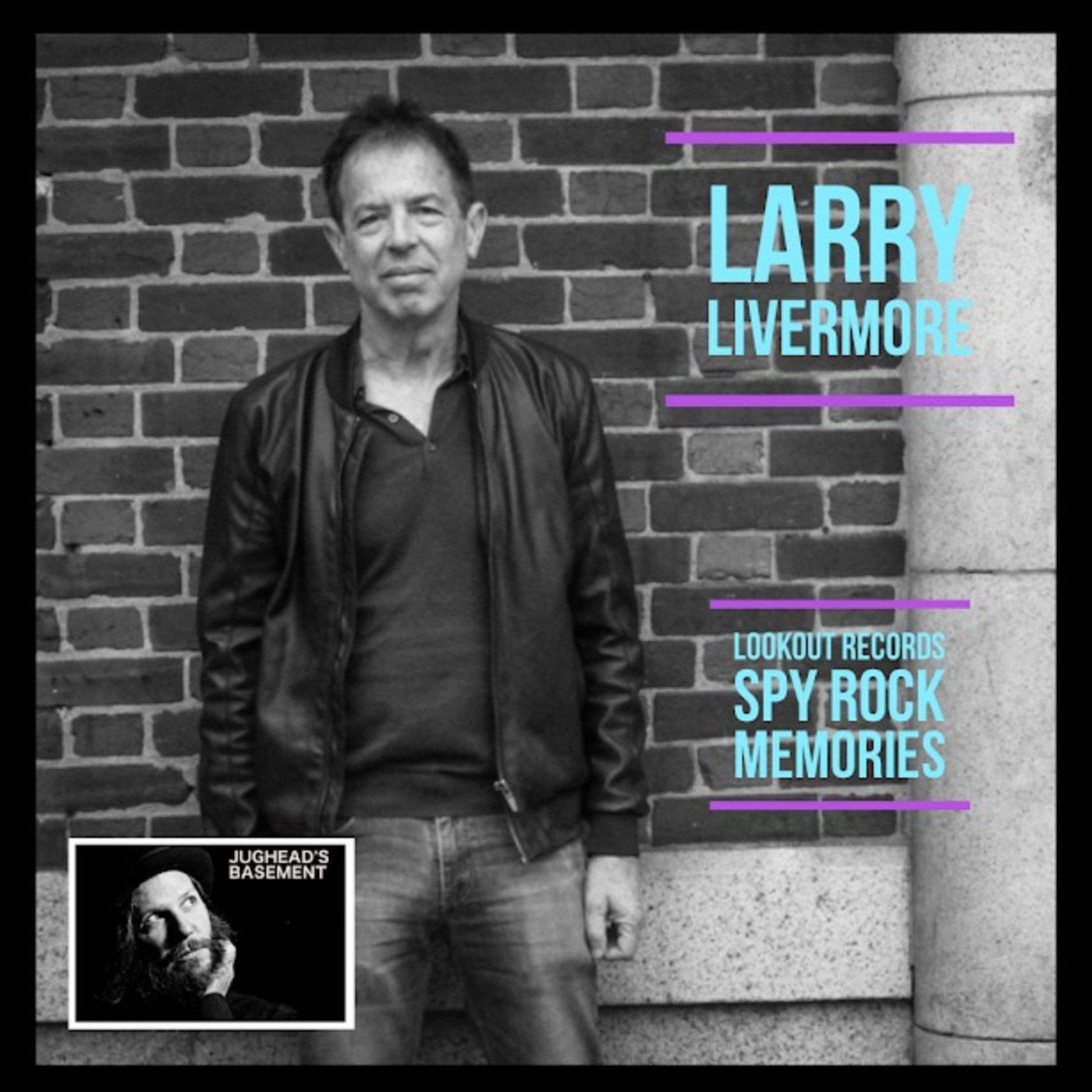 Jughead's BasementEpisode 76 - Lawrence Livermore on LoFi Interviews with HiFi GuestsEpisode 76 of Jughead’s Basement sub-category LoFi Interviews with HiFi Guests this week we meet Lookout Records co-founder and writer of Spy Rock Memories Lawrence Livermore. In this discussion we talk about such things as The Greaser and Hippie Movements, Being an Outcast in your own scene, Discovering one’s ancestry, American Democracy, China, retaining a childlike attitude and curiosity, the strained last days of Screeching Weasel’s last days on Lookout records and much much more.www.jugheadsbasementpodcast.comwww.sirenrecordsmchenry.comwww.larylivermore.com2021-06-2804 min
Jughead's BasementEpisode 76 - Lawrence Livermore on LoFi Interviews with HiFi GuestsEpisode 76 of Jughead’s Basement sub-category LoFi Interviews with HiFi Guests this week we meet Lookout Records co-founder and writer of Spy Rock Memories Lawrence Livermore. In this discussion we talk about such things as The Greaser and Hippie Movements, Being an Outcast in your own scene, Discovering one’s ancestry, American Democracy, China, retaining a childlike attitude and curiosity, the strained last days of Screeching Weasel’s last days on Lookout records and much much more.www.jugheadsbasementpodcast.comwww.sirenrecordsmchenry.comwww.larylivermore.com2021-06-2804 min Trusted CI podcastSep 2019: Jupyter Security at Lawrence Livermore National LaboratoryJupyter Notebooks have become tremendously popular for creating, sharing and reproducing science. While they are relatively easy to setup and use, there has (until recently) been little concern regarding the security implications of running these Notebooks. This presentation will cover the developments and practices used at Lawrence Livermore National Laboratory to secure notebooks running in multi-tenant, HPC environments.
Speaker Bio: Thomas Mendoza is a staff Computer Scientist at LLNL working for Livermore Computing’s HPC center on web architecture and security.2021-04-1329 min
Trusted CI podcastSep 2019: Jupyter Security at Lawrence Livermore National LaboratoryJupyter Notebooks have become tremendously popular for creating, sharing and reproducing science. While they are relatively easy to setup and use, there has (until recently) been little concern regarding the security implications of running these Notebooks. This presentation will cover the developments and practices used at Lawrence Livermore National Laboratory to secure notebooks running in multi-tenant, HPC environments.
Speaker Bio: Thomas Mendoza is a staff Computer Scientist at LLNL working for Livermore Computing’s HPC center on web architecture and security.2021-04-1329 min Storytellers of STEMM#93 - Gary Trubl: Soil Microbes & Viral EcologyToday's storyteller is Dr Gary Trubl! He's a microbiologist interested in the ecology of viruses, in particular in soil environments, and he's currently doing his post doc at the Lawrence Livermore National Laboratory. We talk about his research in rainforest soils in Puerto Rico and also in permafrost, and I ask him whether viruses are considered to be alive or not, which is a very contentious issue! He's also working to get viruses included in the search for life in outer space. This is out of my wheelhouse so I ask a lot of probably ridiculous questions (which is...2021-01-191h 08
Storytellers of STEMM#93 - Gary Trubl: Soil Microbes & Viral EcologyToday's storyteller is Dr Gary Trubl! He's a microbiologist interested in the ecology of viruses, in particular in soil environments, and he's currently doing his post doc at the Lawrence Livermore National Laboratory. We talk about his research in rainforest soils in Puerto Rico and also in permafrost, and I ask him whether viruses are considered to be alive or not, which is a very contentious issue! He's also working to get viruses included in the search for life in outer space. This is out of my wheelhouse so I ask a lot of probably ridiculous questions (which is...2021-01-191h 08 Talking TechniciansS01-E01 Laser Technicians at Lawrence Livermore National LabCierstynn is a technician at Lawrence Livermore National Lab (LLNL). Learn about her job at the National Ignition Facility at LLNL and her path to becoming a technician.The Micro Nano Technology Education Center (MNT-EC): https://ate.is/MNT-ECIndian Hills Community College: http://www.indianhills.edu/Laser and Optics Technology Program at Indian Hills Community College: http://www.indianhills.edu/academics/tech/laser.phpLawrence Livermore National Lab: https://www.llnl.gov/2020-12-3114 min
Talking TechniciansS01-E01 Laser Technicians at Lawrence Livermore National LabCierstynn is a technician at Lawrence Livermore National Lab (LLNL). Learn about her job at the National Ignition Facility at LLNL and her path to becoming a technician.The Micro Nano Technology Education Center (MNT-EC): https://ate.is/MNT-ECIndian Hills Community College: http://www.indianhills.edu/Laser and Optics Technology Program at Indian Hills Community College: http://www.indianhills.edu/academics/tech/laser.phpLawrence Livermore National Lab: https://www.llnl.gov/2020-12-3114 min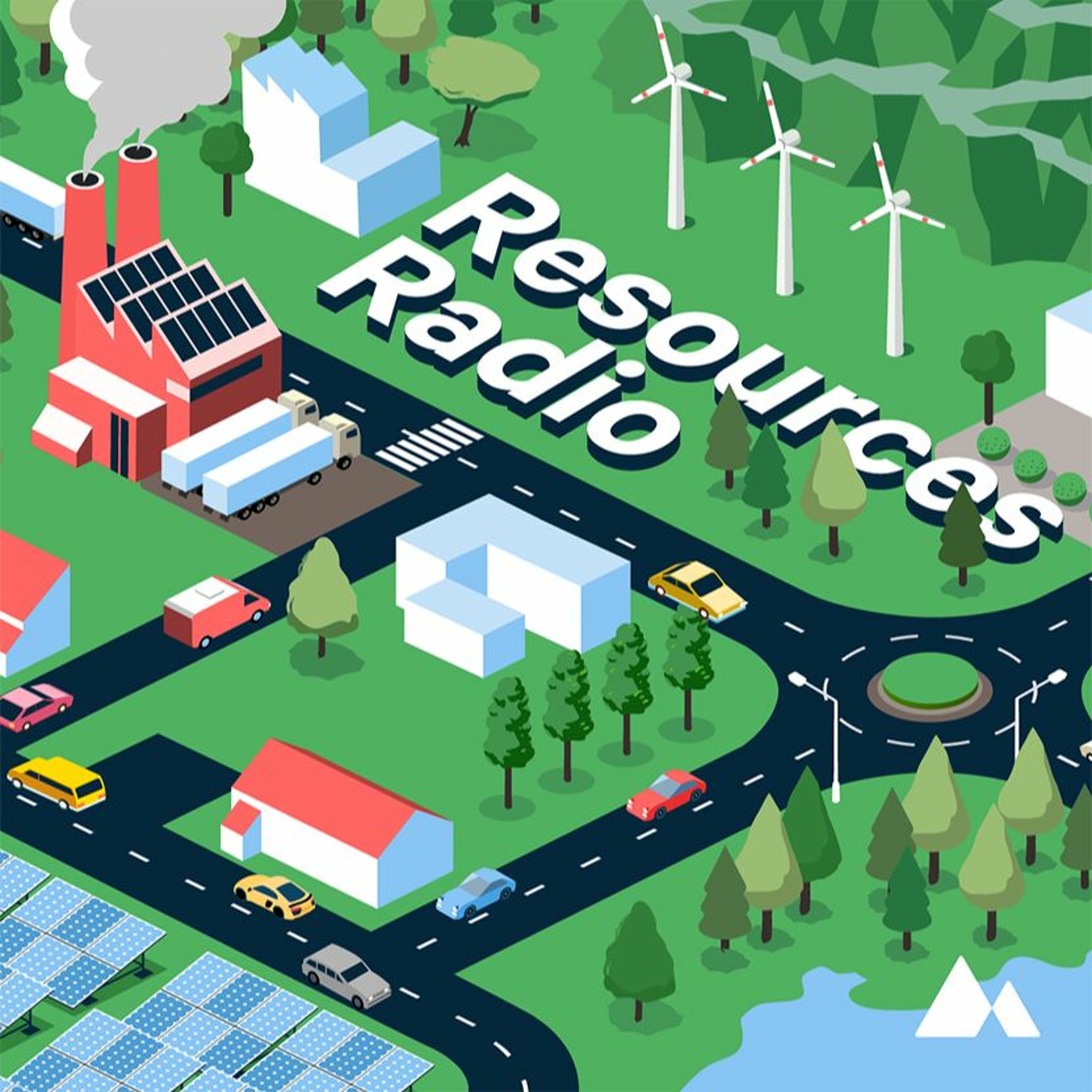 Resources RadioThe Future of Cost-Benefit Analysis, with Michael Livermore and Richard ReveszIn this week's episode, host Kristin Hayes talks with the coauthors of the new book “Reviving Rationality: Saving Cost-Benefit Analysis for the Sake of the Environment and Our Health," Michael A. Livermore and Richard Revesz.
Livermore was the founding executive director of the Institute for Policy Integrity at New York University (NYU) and now serves as one of its senior advisors. He is a professor at the University of Virginia’s School of Law. Revesz is the Lawrence King Professor of Law at NYU and the current director of the Institute for Policy Integrity. Oxford University Press released the new book...2020-11-1536 min
Resources RadioThe Future of Cost-Benefit Analysis, with Michael Livermore and Richard ReveszIn this week's episode, host Kristin Hayes talks with the coauthors of the new book “Reviving Rationality: Saving Cost-Benefit Analysis for the Sake of the Environment and Our Health," Michael A. Livermore and Richard Revesz.
Livermore was the founding executive director of the Institute for Policy Integrity at New York University (NYU) and now serves as one of its senior advisors. He is a professor at the University of Virginia’s School of Law. Revesz is the Lawrence King Professor of Law at NYU and the current director of the Institute for Policy Integrity. Oxford University Press released the new book...2020-11-1536 min Jersey Beat PodcastJersey Beat Podcast #179: Larry LivermoreOn this episode of the Jersey Beat Podcast, Editor Jim Testa chats with Larry Livermore, co-founder and former co-owner of Lookout Records, author, and frontman of The Potatomen. Don Giovanni Records has just released Toytown: Outtakes And Rarities, a collection of demos and other effluvia from the band that Livermore formed with his business partner and good friend Patrick Hayes and, a barely teenaged lad who called himself Tres Cool (whatever happened to him?) Larry talks about both the Potatomen and the book he's currently working on, as well as some other remembrances and observations.2020-10-171h 03
Jersey Beat PodcastJersey Beat Podcast #179: Larry LivermoreOn this episode of the Jersey Beat Podcast, Editor Jim Testa chats with Larry Livermore, co-founder and former co-owner of Lookout Records, author, and frontman of The Potatomen. Don Giovanni Records has just released Toytown: Outtakes And Rarities, a collection of demos and other effluvia from the band that Livermore formed with his business partner and good friend Patrick Hayes and, a barely teenaged lad who called himself Tres Cool (whatever happened to him?) Larry talks about both the Potatomen and the book he's currently working on, as well as some other remembrances and observations.2020-10-171h 03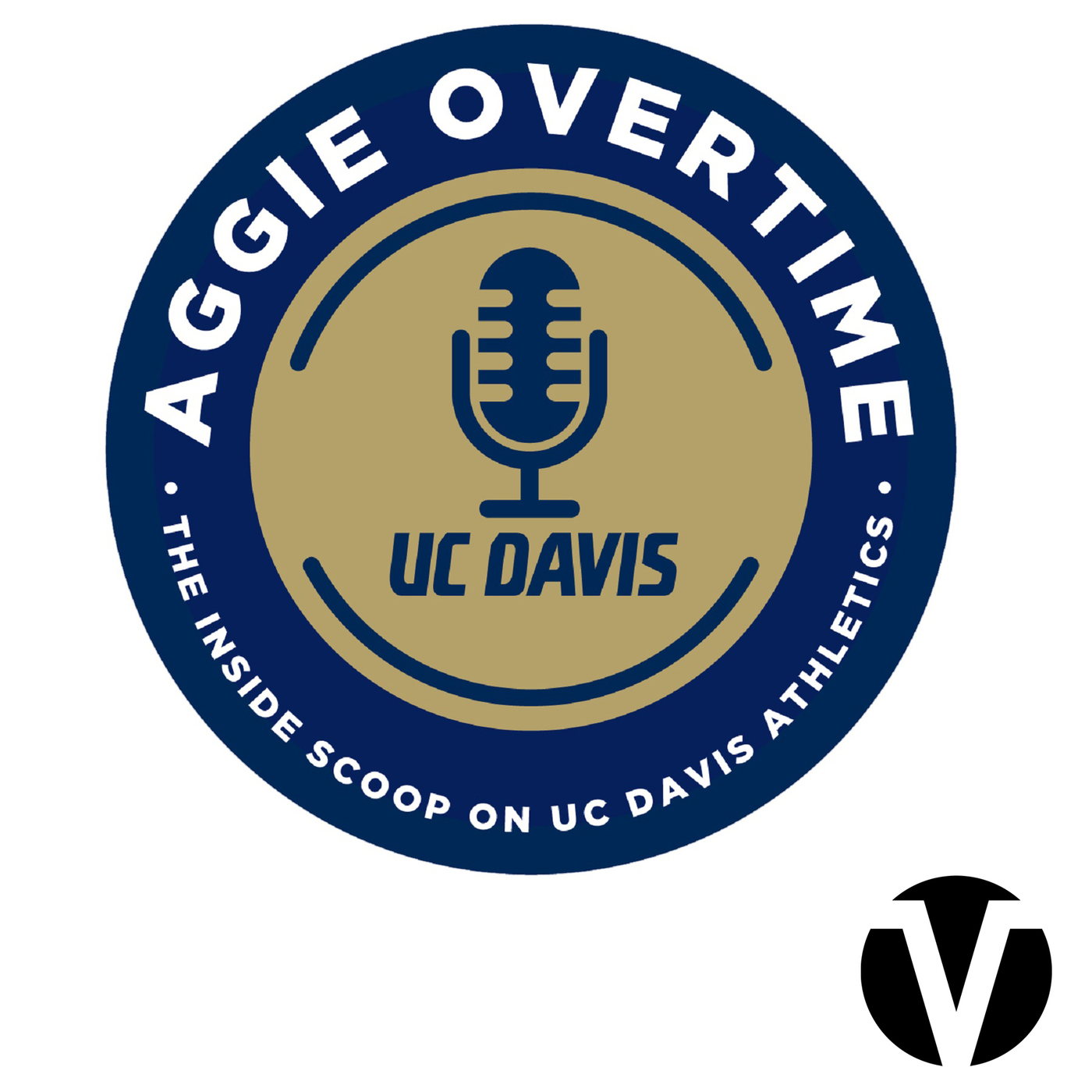 Aggie Overtime – The Inside Scoop on UC Davis AthleticsAggie EVO World of Work Coffee Talk for 5/22/2020 - Mike Shaw, Lawrence Livermore National LaboratoryAggie EVO World of Work Coffee Talk for 5/22/2020 - Mike Shaw, Lawrence Livermore National LaboratorySee Privacy Policy at https://art19.com/privacy and California Privacy Notice at https://art19.com/privacy#do-not-sell-my-info.2020-05-2225 min
Aggie Overtime – The Inside Scoop on UC Davis AthleticsAggie EVO World of Work Coffee Talk for 5/22/2020 - Mike Shaw, Lawrence Livermore National LaboratoryAggie EVO World of Work Coffee Talk for 5/22/2020 - Mike Shaw, Lawrence Livermore National LaboratorySee Privacy Policy at https://art19.com/privacy and California Privacy Notice at https://art19.com/privacy#do-not-sell-my-info.2020-05-2225 min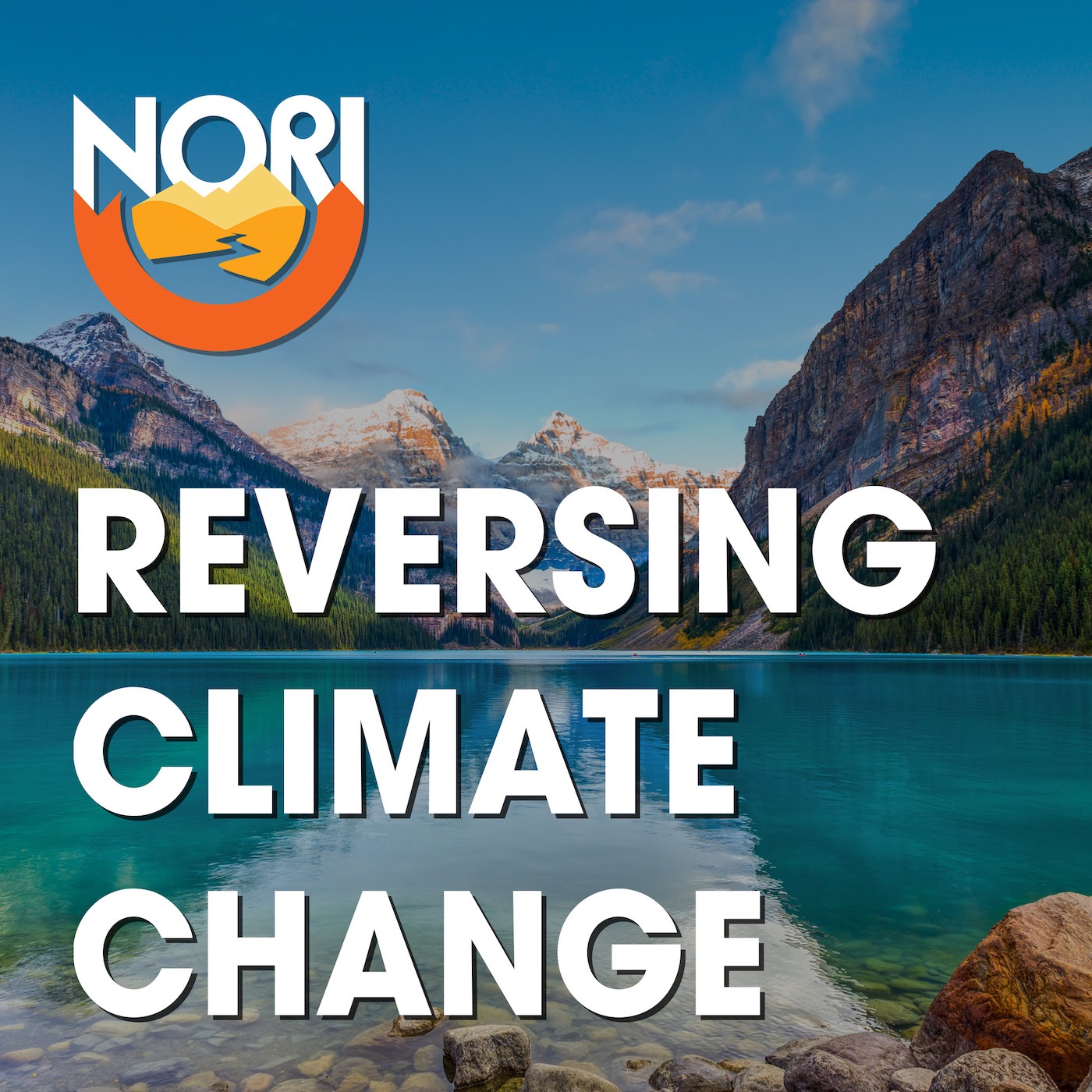 Reversing Climate ChangeS2E6: California's big negative emissions opportunity—w/ Dr. Roger Aines of Lawrence Livermore Nat'l LabDr. Roger Aines is the Chief Scientist of the Energy Program at Lawrence Livermore National Laboratory and coauthor of the LLNL report Getting to Neutral: Options for Negative Carbon Emissions in California. On this episode of the Reversing Climate Change, Roger joins Ross and Christophe to discuss how the California study came about and walk us through the three carbon removal strategies outlined in the report—natural solutions, waste biomass and direct air capture.2020-03-3149 min
Reversing Climate ChangeS2E6: California's big negative emissions opportunity—w/ Dr. Roger Aines of Lawrence Livermore Nat'l LabDr. Roger Aines is the Chief Scientist of the Energy Program at Lawrence Livermore National Laboratory and coauthor of the LLNL report Getting to Neutral: Options for Negative Carbon Emissions in California. On this episode of the Reversing Climate Change, Roger joins Ross and Christophe to discuss how the California study came about and walk us through the three carbon removal strategies outlined in the report—natural solutions, waste biomass and direct air capture.2020-03-3149 min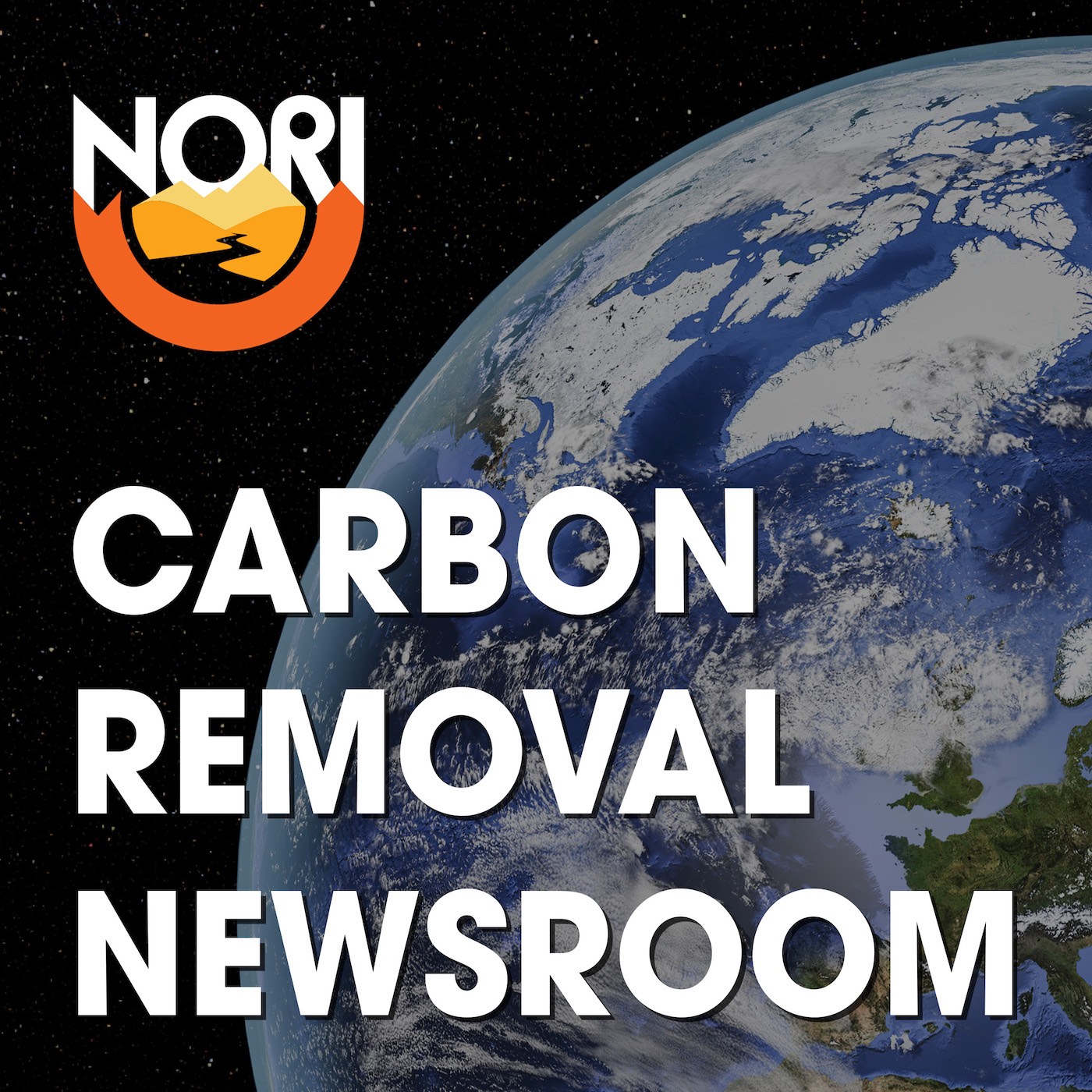 Carbon Removal NewsroomCalifornia's Getting to Neutral report from Lawrence Livermore National LaboratoryThe State of California has set a goal of becoming net-zero by 2045. Lawrence Livermore National Laboratory's researchers have produced a report called Getting to Neutral: Options for Negative Carbon Emissions in California, detailing the various pathways available to California using actually-existing carbon removal technologies needed to do so. Carbon180's Managing Director, Giana Amador, is on the show to explain how this process works, the report's contents, and what happens now.
---
Send in a voice message: https://podcasters.spotify.com/pod/show/carbonremovalnewsroom/message
Support this podcast: https://podcasters.spotify.com/pod/show/carbonremovalnewsroom/support2020-03-0917 min
Carbon Removal NewsroomCalifornia's Getting to Neutral report from Lawrence Livermore National LaboratoryThe State of California has set a goal of becoming net-zero by 2045. Lawrence Livermore National Laboratory's researchers have produced a report called Getting to Neutral: Options for Negative Carbon Emissions in California, detailing the various pathways available to California using actually-existing carbon removal technologies needed to do so. Carbon180's Managing Director, Giana Amador, is on the show to explain how this process works, the report's contents, and what happens now.
---
Send in a voice message: https://podcasters.spotify.com/pod/show/carbonremovalnewsroom/message
Support this podcast: https://podcasters.spotify.com/pod/show/carbonremovalnewsroom/support2020-03-0917 min Lawrence Livermore National LabCrossing the Blood Brain Barrier: One Byte at a TimeThe blood-brain-barrier (BBB) is a special structure in the body that helps to protect the brain from unwanted toxins and germs. Unfortunately, this barrier can also make it extremely difficult for therapeutics to reach their intended target within brain. Lawrence Livermore Lab scientists describe how combining experimental techniques with computational methods, making use of some of the fastest supercomputers in the world, can speed up the process of optimizing therapeutics to cross the BBB. Series: "Lawrence Livermore National Lab Science on Saturday" [Science] [Show ID: 34467]2020-01-0653 min
Lawrence Livermore National LabCrossing the Blood Brain Barrier: One Byte at a TimeThe blood-brain-barrier (BBB) is a special structure in the body that helps to protect the brain from unwanted toxins and germs. Unfortunately, this barrier can also make it extremely difficult for therapeutics to reach their intended target within brain. Lawrence Livermore Lab scientists describe how combining experimental techniques with computational methods, making use of some of the fastest supercomputers in the world, can speed up the process of optimizing therapeutics to cross the BBB. Series: "Lawrence Livermore National Lab Science on Saturday" [Science] [Show ID: 34467]2020-01-0653 min Lawrence Livermore National LabCrossing the Blood Brain Barrier: One Byte at a TimeThe blood-brain-barrier (BBB) is a special structure in the body that helps to protect the brain from unwanted toxins and germs. Unfortunately, this barrier can also make it extremely difficult for therapeutics to reach their intended target within brain. Lawrence Livermore Lab scientists describe how combining experimental techniques with computational methods, making use of some of the fastest supercomputers in the world, can speed up the process of optimizing therapeutics to cross the BBB. Series: "Lawrence Livermore National Lab Science on Saturday" [Science] [Show ID: 34467]2020-01-0653 min
Lawrence Livermore National LabCrossing the Blood Brain Barrier: One Byte at a TimeThe blood-brain-barrier (BBB) is a special structure in the body that helps to protect the brain from unwanted toxins and germs. Unfortunately, this barrier can also make it extremely difficult for therapeutics to reach their intended target within brain. Lawrence Livermore Lab scientists describe how combining experimental techniques with computational methods, making use of some of the fastest supercomputers in the world, can speed up the process of optimizing therapeutics to cross the BBB. Series: "Lawrence Livermore National Lab Science on Saturday" [Science] [Show ID: 34467]2020-01-0653 min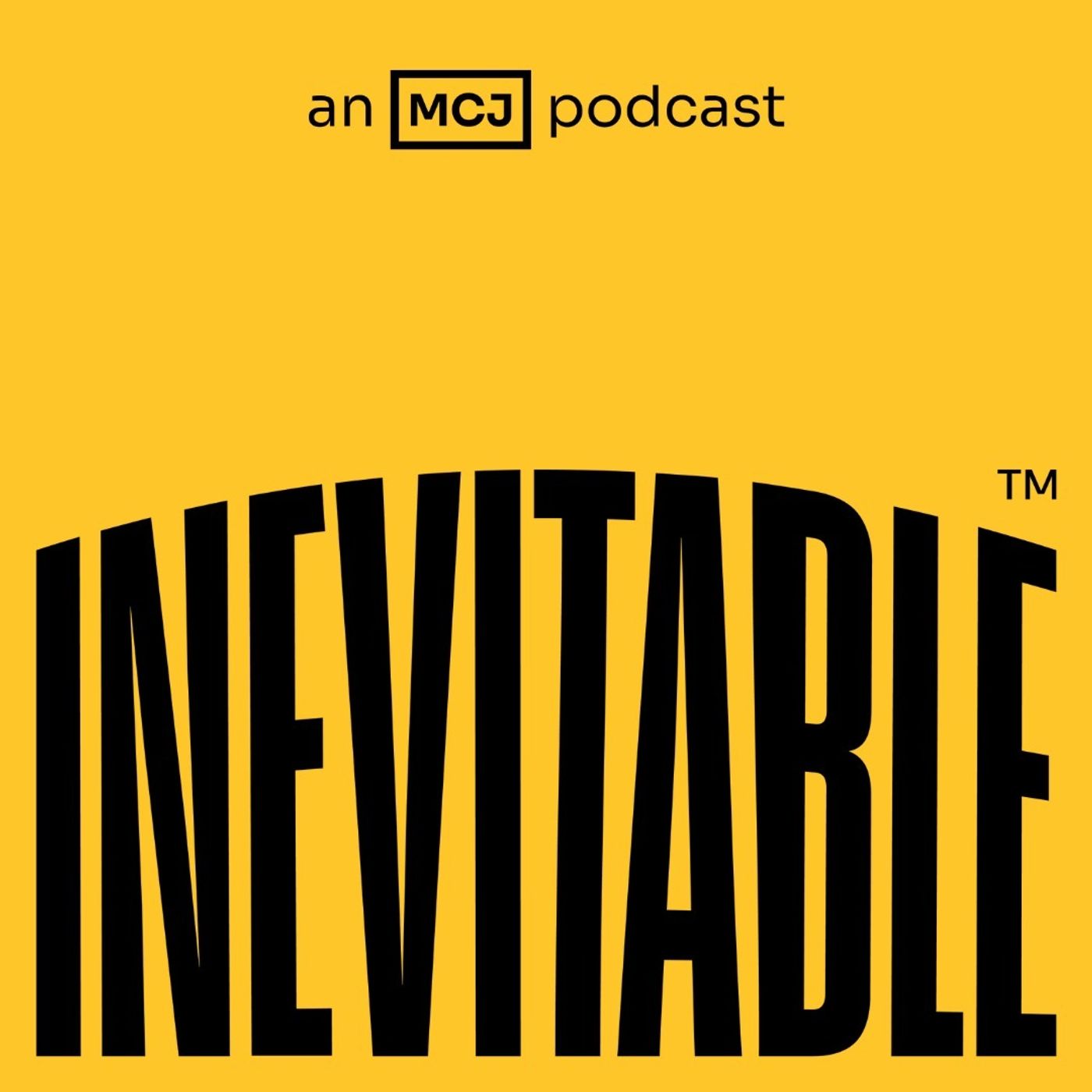 InevitableEp 61: Julio Friedmann, Senior Research Scholar & Lead of CaMRI Initiative at Columbia UniversityToday’s guest Dr. Julio Friedmann, a Senior Research Scholar at the Center on Global Energy Policy at Columbia University.Dr. Friedmann recently served as Principal Deputy Assistant Secretary for the Office of Fossil Energy at the Department of Energy where he was responsible for DOE’s R&D program in advanced fossil energy systems, carbon capture, and storage (CCS), CO2 utilization, and clean coal deployment. His expertise includes Large-Scale Carbon Management, CO2 removal, CO2 recycling, Oil and Gas systems, international engagements in clean fossil energy, and inter-agency engagements within the US government. He has also held posi...2019-12-091h 08
InevitableEp 61: Julio Friedmann, Senior Research Scholar & Lead of CaMRI Initiative at Columbia UniversityToday’s guest Dr. Julio Friedmann, a Senior Research Scholar at the Center on Global Energy Policy at Columbia University.Dr. Friedmann recently served as Principal Deputy Assistant Secretary for the Office of Fossil Energy at the Department of Energy where he was responsible for DOE’s R&D program in advanced fossil energy systems, carbon capture, and storage (CCS), CO2 utilization, and clean coal deployment. His expertise includes Large-Scale Carbon Management, CO2 removal, CO2 recycling, Oil and Gas systems, international engagements in clean fossil energy, and inter-agency engagements within the US government. He has also held posi...2019-12-091h 08 Mission DailySecuring the Nuclear Arsenal with Lawrence Livermore Lab Director, Bill GoldsteinBill Goldstein has always been attracted to a challenge. From his days in high school striving to understand theoretical physics problems, to his current work as the director of the Lawrence Livermore National Laboratory, (LLNL), Bill is a magnet for tough problems. But the problems that he faces at LLNL today aren’t just theoretical. They are very real and account for the safety of the nation and of the world. See, LLNL isn’t just any old testing lab; LLNL is responsible for securing and maintaining the U.S.’s nuclear arsenal. The most pressi...2019-08-1545 min
Mission DailySecuring the Nuclear Arsenal with Lawrence Livermore Lab Director, Bill GoldsteinBill Goldstein has always been attracted to a challenge. From his days in high school striving to understand theoretical physics problems, to his current work as the director of the Lawrence Livermore National Laboratory, (LLNL), Bill is a magnet for tough problems. But the problems that he faces at LLNL today aren’t just theoretical. They are very real and account for the safety of the nation and of the world. See, LLNL isn’t just any old testing lab; LLNL is responsible for securing and maintaining the U.S.’s nuclear arsenal. The most pressi...2019-08-1545 min Lawrence Livermore National Lab3D Bioprinted Model for Metastatic Brain TumorsCancer becomes highly dangerous when it spreads from its original site to a different vital organ. These secondary tumors called metastases are what kill most patients. Despite hundreds of years of research, it is not understood why, where, and how cancer spreads to organs like the brain. Lawrence Livermore Lab scientist describes how they bring together cancer biology, 3D printing and material science, to understand and hopefully prevent metastases in the future. Series: "Lawrence Livermore National Lab Science on Saturday" [Health and Medicine] [Science] [Show ID: 34466]2019-07-1746 min
Lawrence Livermore National Lab3D Bioprinted Model for Metastatic Brain TumorsCancer becomes highly dangerous when it spreads from its original site to a different vital organ. These secondary tumors called metastases are what kill most patients. Despite hundreds of years of research, it is not understood why, where, and how cancer spreads to organs like the brain. Lawrence Livermore Lab scientist describes how they bring together cancer biology, 3D printing and material science, to understand and hopefully prevent metastases in the future. Series: "Lawrence Livermore National Lab Science on Saturday" [Health and Medicine] [Science] [Show ID: 34466]2019-07-1746 min Lawrence Livermore National Lab3D Bioprinted Model for Metastatic Brain TumorsCancer becomes highly dangerous when it spreads from its original site to a different vital organ. These secondary tumors called metastases are what kill most patients. Despite hundreds of years of research, it is not understood why, where, and how cancer spreads to organs like the brain. Lawrence Livermore Lab scientist describes how they bring together cancer biology, 3D printing and material science, to understand and hopefully prevent metastases in the future. Series: "Lawrence Livermore National Lab Science on Saturday" [Health and Medicine] [Science] [Show ID: 34466]2019-07-1746 min
Lawrence Livermore National Lab3D Bioprinted Model for Metastatic Brain TumorsCancer becomes highly dangerous when it spreads from its original site to a different vital organ. These secondary tumors called metastases are what kill most patients. Despite hundreds of years of research, it is not understood why, where, and how cancer spreads to organs like the brain. Lawrence Livermore Lab scientist describes how they bring together cancer biology, 3D printing and material science, to understand and hopefully prevent metastases in the future. Series: "Lawrence Livermore National Lab Science on Saturday" [Health and Medicine] [Science] [Show ID: 34466]2019-07-1746 min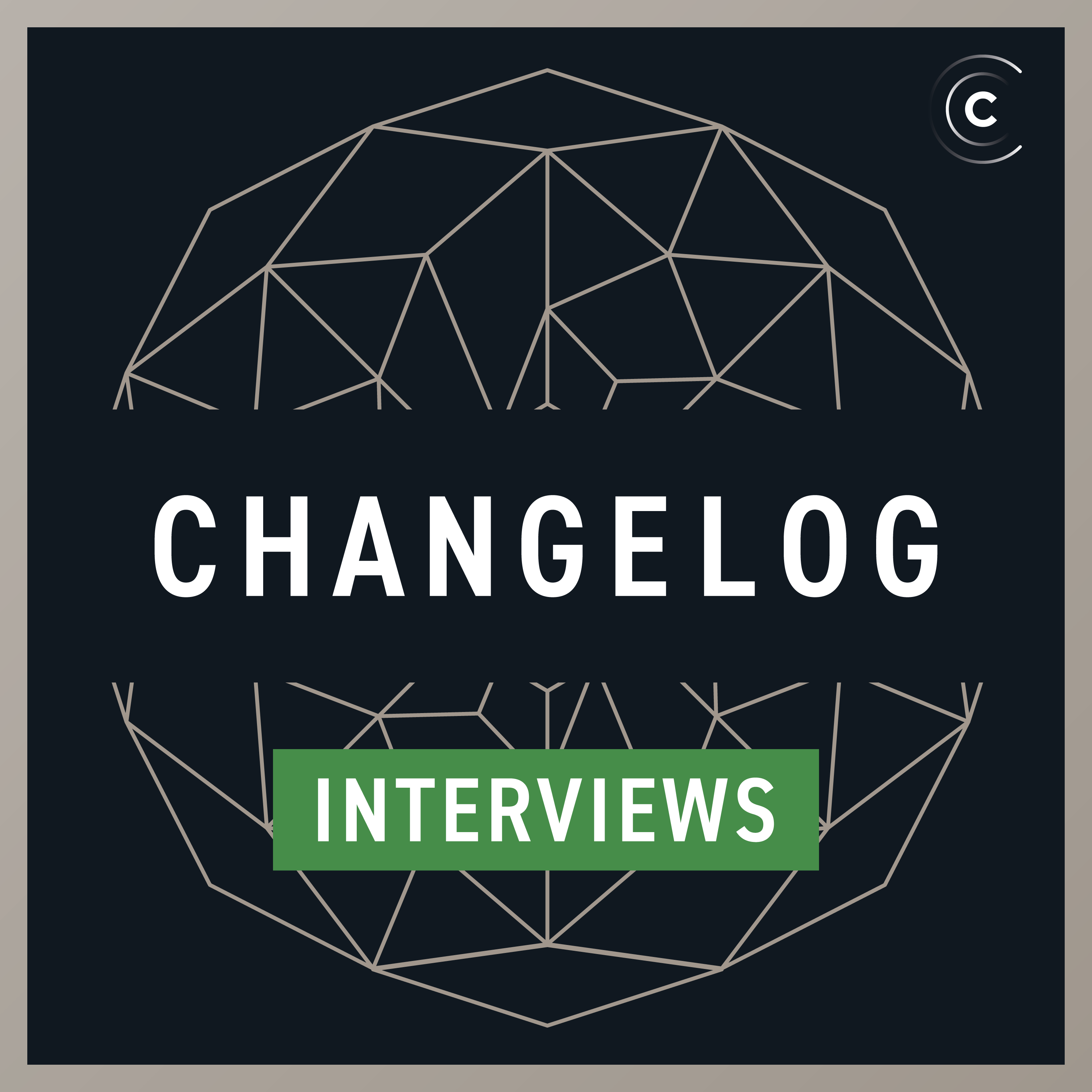 The Changelog: Software Development, Open SourceMoore's Law and High Performance Computing (Interview)Todd Gamblin, a computer scientist at Lawrence Livermore National Laboratory, joined us to talk about Moore’s Law, his work at Lawrence Livermore National Laboratory, the components of a micro-chip, and High Performance Computing.
Join the discussionChangelog++ members support our work, get closer to the metal, and make the ads disappear. Join today!Sponsors:Rollbar – Our error monitoring partner. Rollbar provides real-time error monitoring, alerting, and analytics to help us resolve production errors in minutes. To start deploying with confidence - head to rollbar.com/changelog
DigitalOcean – DigitalOcean has new, highly...2018-02-161h 14
The Changelog: Software Development, Open SourceMoore's Law and High Performance Computing (Interview)Todd Gamblin, a computer scientist at Lawrence Livermore National Laboratory, joined us to talk about Moore’s Law, his work at Lawrence Livermore National Laboratory, the components of a micro-chip, and High Performance Computing.
Join the discussionChangelog++ members support our work, get closer to the metal, and make the ads disappear. Join today!Sponsors:Rollbar – Our error monitoring partner. Rollbar provides real-time error monitoring, alerting, and analytics to help us resolve production errors in minutes. To start deploying with confidence - head to rollbar.com/changelog
DigitalOcean – DigitalOcean has new, highly...2018-02-161h 14 Changelog InterviewsMoore's Law and High Performance ComputingTodd Gamblin, a computer scientist at Lawrence Livermore National Laboratory, joined us to talk about Moore’s Law, his work at Lawrence Livermore National Laboratory, the components of a micro-chip, and High Performance Computing.
Join the discussionChangelog++ members support our work, get closer to the metal, and make the ads disappear. Join today!Sponsors:Rollbar – Our error monitoring partner. Rollbar provides real-time error monitoring, alerting, and analytics to help us resolve production errors in minutes. To start deploying with confidence - head to rollbar.com/changelog
DigitalOcean – DigitalOcean has new, highly...2018-02-161h 14
Changelog InterviewsMoore's Law and High Performance ComputingTodd Gamblin, a computer scientist at Lawrence Livermore National Laboratory, joined us to talk about Moore’s Law, his work at Lawrence Livermore National Laboratory, the components of a micro-chip, and High Performance Computing.
Join the discussionChangelog++ members support our work, get closer to the metal, and make the ads disappear. Join today!Sponsors:Rollbar – Our error monitoring partner. Rollbar provides real-time error monitoring, alerting, and analytics to help us resolve production errors in minutes. To start deploying with confidence - head to rollbar.com/changelog
DigitalOcean – DigitalOcean has new, highly...2018-02-161h 14 Lawrence Livermore National LabHarnessing Fusion: Creating a Sun on EarthThe National Ignition Facility (NIF) at the Lawrence Livermore National Laboratory (LLNL) is the world's largest and most powerful laser system. Experimental physicist Tammy Ma explores how and why scientists and engineers are working hard to demonstrate sustainable fusion burn - the same reaction that occurs in the sun - to one day harness as a source of limitless, clean energy. Series: "Lawrence Livermore National Lab Science on Saturday" [Science] [Show ID: 31523]2016-12-1939 min
Lawrence Livermore National LabHarnessing Fusion: Creating a Sun on EarthThe National Ignition Facility (NIF) at the Lawrence Livermore National Laboratory (LLNL) is the world's largest and most powerful laser system. Experimental physicist Tammy Ma explores how and why scientists and engineers are working hard to demonstrate sustainable fusion burn - the same reaction that occurs in the sun - to one day harness as a source of limitless, clean energy. Series: "Lawrence Livermore National Lab Science on Saturday" [Science] [Show ID: 31523]2016-12-1939 min Lawrence Livermore National LabHarnessing Fusion: Creating a Sun on EarthThe National Ignition Facility (NIF) at the Lawrence Livermore National Laboratory (LLNL) is the world's largest and most powerful laser system. Experimental physicist Tammy Ma explores how and why scientists and engineers are working hard to demonstrate sustainable fusion burn - the same reaction that occurs in the sun - to one day harness as a source of limitless, clean energy. Series: "Lawrence Livermore National Lab Science on Saturday" [Science] [Show ID: 31523]2016-12-1939 min
Lawrence Livermore National LabHarnessing Fusion: Creating a Sun on EarthThe National Ignition Facility (NIF) at the Lawrence Livermore National Laboratory (LLNL) is the world's largest and most powerful laser system. Experimental physicist Tammy Ma explores how and why scientists and engineers are working hard to demonstrate sustainable fusion burn - the same reaction that occurs in the sun - to one day harness as a source of limitless, clean energy. Series: "Lawrence Livermore National Lab Science on Saturday" [Science] [Show ID: 31523]2016-12-1939 min Physics (Video)Harnessing Fusion: Creating a Sun on EarthThe National Ignition Facility (NIF) at the Lawrence Livermore National Laboratory (LLNL) is the world's largest and most powerful laser system. Experimental physicist Tammy Ma explores how and why scientists and engineers are working hard to demonstrate sustainable fusion burn - the same reaction that occurs in the sun - to one day harness as a source of limitless, clean energy. Series: "Lawrence Livermore National Lab Science on Saturday" [Science] [Show ID: 31523]2016-12-1939 min
Physics (Video)Harnessing Fusion: Creating a Sun on EarthThe National Ignition Facility (NIF) at the Lawrence Livermore National Laboratory (LLNL) is the world's largest and most powerful laser system. Experimental physicist Tammy Ma explores how and why scientists and engineers are working hard to demonstrate sustainable fusion burn - the same reaction that occurs in the sun - to one day harness as a source of limitless, clean energy. Series: "Lawrence Livermore National Lab Science on Saturday" [Science] [Show ID: 31523]2016-12-1939 min Lawrence Livermore National LabiChip: Human Physiology in the Palm of Your HandDespite being diminutive in size, iChips have the potential to make big impacts on drug development and medical treatment testing. Lawrence Livermore National Lab is replicating the human body on a miniature scale, specifically focusing on brain physiology. Capturing human physiology outside the body allows scientists to probe and understand the human body without using human subjects. Staff scientist Elizabeth Wheeler describes how her group is using biology, 3D bioprinting, microchips and other technology to recreate human physiology outside the body. Series: "Lawrence Livermore National Lab Science on Saturday" [Science] [Show ID: 31475]2016-12-0547 min
Lawrence Livermore National LabiChip: Human Physiology in the Palm of Your HandDespite being diminutive in size, iChips have the potential to make big impacts on drug development and medical treatment testing. Lawrence Livermore National Lab is replicating the human body on a miniature scale, specifically focusing on brain physiology. Capturing human physiology outside the body allows scientists to probe and understand the human body without using human subjects. Staff scientist Elizabeth Wheeler describes how her group is using biology, 3D bioprinting, microchips and other technology to recreate human physiology outside the body. Series: "Lawrence Livermore National Lab Science on Saturday" [Science] [Show ID: 31475]2016-12-0547 min Lawrence Livermore National LabComputer Simulations of Earthquakes in the San Francisco Bay AreaComputer simulations of earthquake shaking can provide valuable information on the expected intensity of shaking from earthquakes. Arthur Rodgers, a seismologist/geophysicist at Lawrence Livermore National Laboratory, covers seismic hazard in the Bay Area, describes computer simulations of past and possible future earthquakes and looks at the physics that underlies the numerical methods. Series: "Lawrence Livermore National Lab Science on Saturday" [Science] [Show ID: 29612]2015-06-2256 min
Lawrence Livermore National LabComputer Simulations of Earthquakes in the San Francisco Bay AreaComputer simulations of earthquake shaking can provide valuable information on the expected intensity of shaking from earthquakes. Arthur Rodgers, a seismologist/geophysicist at Lawrence Livermore National Laboratory, covers seismic hazard in the Bay Area, describes computer simulations of past and possible future earthquakes and looks at the physics that underlies the numerical methods. Series: "Lawrence Livermore National Lab Science on Saturday" [Science] [Show ID: 29612]2015-06-2256 min Earthquake and SeismologyComputer Simulations of Earthquakes in the San Francisco Bay AreaComputer simulations of earthquake shaking can provide valuable information on the expected intensity of shaking from earthquakes. Arthur Rodgers, a seismologist/geophysicist at Lawrence Livermore National Laboratory, covers seismic hazard in the Bay Area, describes computer simulations of past and possible future earthquakes and looks at the physics that underlies the numerical methods. Series: "Lawrence Livermore National Lab Science on Saturday" [Science] [Show ID: 29612]2015-06-2200 min
Earthquake and SeismologyComputer Simulations of Earthquakes in the San Francisco Bay AreaComputer simulations of earthquake shaking can provide valuable information on the expected intensity of shaking from earthquakes. Arthur Rodgers, a seismologist/geophysicist at Lawrence Livermore National Laboratory, covers seismic hazard in the Bay Area, describes computer simulations of past and possible future earthquakes and looks at the physics that underlies the numerical methods. Series: "Lawrence Livermore National Lab Science on Saturday" [Science] [Show ID: 29612]2015-06-2200 min Earthquake and SeismologyComputer Simulations of Earthquakes in the San Francisco Bay AreaComputer simulations of earthquake shaking can provide valuable information on the expected intensity of shaking from earthquakes. Arthur Rodgers, a seismologist/geophysicist at Lawrence Livermore National Laboratory, covers seismic hazard in the Bay Area, describes computer simulations of past and possible future earthquakes and looks at the physics that underlies the numerical methods. Series: "Lawrence Livermore National Lab Science on Saturday" [Science] [Show ID: 29612]2015-06-2200 min
Earthquake and SeismologyComputer Simulations of Earthquakes in the San Francisco Bay AreaComputer simulations of earthquake shaking can provide valuable information on the expected intensity of shaking from earthquakes. Arthur Rodgers, a seismologist/geophysicist at Lawrence Livermore National Laboratory, covers seismic hazard in the Bay Area, describes computer simulations of past and possible future earthquakes and looks at the physics that underlies the numerical methods. Series: "Lawrence Livermore National Lab Science on Saturday" [Science] [Show ID: 29612]2015-06-2200 min Lawrence Livermore National LabHydrology of an Ant FarmHow does groundwater interact with surface water and surface ecosystems? How can the many types and forms of groundwater pollution be visualized? This presentation by Lawrence Livermore National Lab’s Andy Tompson shows some of the real or potential impacts of drought and climate change and how groundwater may be better managed in the future. "It may look like an Ant Farm, but there are really no ants in this demonstration!" Series: "Lawrence Livermore National Lab Science on Saturday" [Science] [Show ID: 29611]2015-06-1559 min
Lawrence Livermore National LabHydrology of an Ant FarmHow does groundwater interact with surface water and surface ecosystems? How can the many types and forms of groundwater pollution be visualized? This presentation by Lawrence Livermore National Lab’s Andy Tompson shows some of the real or potential impacts of drought and climate change and how groundwater may be better managed in the future. "It may look like an Ant Farm, but there are really no ants in this demonstration!" Series: "Lawrence Livermore National Lab Science on Saturday" [Science] [Show ID: 29611]2015-06-1559 min Lawrence Livermore National LabFusion Modeling: Using Big Computers to Understand One of the Universe's Biggest SecretsFusion energy is a possible long-term energy solution to provide the energy needed to drive economic growth and social development. Harnessing the energy of the Sun and stars here on Earth requires a detailed understanding of the behavior of matter at extreme temperature and density conditions. Massive simulations, using up to one million computer processors (equivalent to hundreds of thousands of laptops working simultaneously) play a critical role in this research. They allow us to test different theories and explore different fusion approaches, such as fast ignition of the fusion fuel. Postdoctoral Fellow at Lawrence Livermore National Lab Frederico Fiuza...2014-09-0851 min
Lawrence Livermore National LabFusion Modeling: Using Big Computers to Understand One of the Universe's Biggest SecretsFusion energy is a possible long-term energy solution to provide the energy needed to drive economic growth and social development. Harnessing the energy of the Sun and stars here on Earth requires a detailed understanding of the behavior of matter at extreme temperature and density conditions. Massive simulations, using up to one million computer processors (equivalent to hundreds of thousands of laptops working simultaneously) play a critical role in this research. They allow us to test different theories and explore different fusion approaches, such as fast ignition of the fusion fuel. Postdoctoral Fellow at Lawrence Livermore National Lab Frederico Fiuza...2014-09-0851 min Lawrence Livermore National LabFusion Modeling: Using Big Computers to Understand One of the Universe's Biggest SecretsFusion energy is a possible long-term energy solution to provide the energy needed to drive economic growth and social development. Harnessing the energy of the Sun and stars here on Earth requires a detailed understanding of the behavior of matter at extreme temperature and density conditions. Massive simulations, using up to one million computer processors (equivalent to hundreds of thousands of laptops working simultaneously) play a critical role in this research. They allow us to test different theories and explore different fusion approaches, such as fast ignition of the fusion fuel. Postdoctoral Fellow at Lawrence Livermore National Lab Frederico Fiuza...2014-09-0851 min
Lawrence Livermore National LabFusion Modeling: Using Big Computers to Understand One of the Universe's Biggest SecretsFusion energy is a possible long-term energy solution to provide the energy needed to drive economic growth and social development. Harnessing the energy of the Sun and stars here on Earth requires a detailed understanding of the behavior of matter at extreme temperature and density conditions. Massive simulations, using up to one million computer processors (equivalent to hundreds of thousands of laptops working simultaneously) play a critical role in this research. They allow us to test different theories and explore different fusion approaches, such as fast ignition of the fusion fuel. Postdoctoral Fellow at Lawrence Livermore National Lab Frederico Fiuza...2014-09-0851 min Science on Saturday (Audio)Fusion Modeling: Using Big Computers to Understand One of the Universe's Biggest SecretsFusion energy is a possible long-term energy solution to provide the energy needed to drive economic growth and social development. Harnessing the energy of the Sun and stars here on Earth requires a detailed understanding of the behavior of matter at extreme temperature and density conditions. Massive simulations, using up to one million computer processors (equivalent to hundreds of thousands of laptops working simultaneously) play a critical role in this research. They allow us to test different theories and explore different fusion approaches, such as fast ignition of the fusion fuel. Postdoctoral Fellow at Lawrence Livermore National Lab Frederico Fiuza...2014-09-0851 min
Science on Saturday (Audio)Fusion Modeling: Using Big Computers to Understand One of the Universe's Biggest SecretsFusion energy is a possible long-term energy solution to provide the energy needed to drive economic growth and social development. Harnessing the energy of the Sun and stars here on Earth requires a detailed understanding of the behavior of matter at extreme temperature and density conditions. Massive simulations, using up to one million computer processors (equivalent to hundreds of thousands of laptops working simultaneously) play a critical role in this research. They allow us to test different theories and explore different fusion approaches, such as fast ignition of the fusion fuel. Postdoctoral Fellow at Lawrence Livermore National Lab Frederico Fiuza...2014-09-0851 min Science on Saturday (Video)Fusion Modeling: Using Big Computers to Understand One of the Universe's Biggest SecretsFusion energy is a possible long-term energy solution to provide the energy needed to drive economic growth and social development. Harnessing the energy of the Sun and stars here on Earth requires a detailed understanding of the behavior of matter at extreme temperature and density conditions. Massive simulations, using up to one million computer processors (equivalent to hundreds of thousands of laptops working simultaneously) play a critical role in this research. They allow us to test different theories and explore different fusion approaches, such as fast ignition of the fusion fuel. Postdoctoral Fellow at Lawrence Livermore National Lab Frederico Fiuza...2014-09-0800 min
Science on Saturday (Video)Fusion Modeling: Using Big Computers to Understand One of the Universe's Biggest SecretsFusion energy is a possible long-term energy solution to provide the energy needed to drive economic growth and social development. Harnessing the energy of the Sun and stars here on Earth requires a detailed understanding of the behavior of matter at extreme temperature and density conditions. Massive simulations, using up to one million computer processors (equivalent to hundreds of thousands of laptops working simultaneously) play a critical role in this research. They allow us to test different theories and explore different fusion approaches, such as fast ignition of the fusion fuel. Postdoctoral Fellow at Lawrence Livermore National Lab Frederico Fiuza...2014-09-0800 min Lawrence Livermore National LabComputer Simulation: Exploring Nature with a ComputerComputers are becoming an increasingly cheaper, more powerful tool that cannot be ignored by professionals. Computer simulation reproduces the behavior of natural and man-made systems to help us understand, predict, and communicate. Vic Castillo, a research engineer at the Lawrence Livermore National Laboratory, shows how computer simulation is used by LLNL scientists on the world’s fastest computers. See how you can get started doing your own computer simulations with free, open-source tools for class projects or just for fun. Series: "Lawrence Livermore National Lab Science on Saturday" [Science] [Show ID: 28463]2014-09-0133 min
Lawrence Livermore National LabComputer Simulation: Exploring Nature with a ComputerComputers are becoming an increasingly cheaper, more powerful tool that cannot be ignored by professionals. Computer simulation reproduces the behavior of natural and man-made systems to help us understand, predict, and communicate. Vic Castillo, a research engineer at the Lawrence Livermore National Laboratory, shows how computer simulation is used by LLNL scientists on the world’s fastest computers. See how you can get started doing your own computer simulations with free, open-source tools for class projects or just for fun. Series: "Lawrence Livermore National Lab Science on Saturday" [Science] [Show ID: 28463]2014-09-0133 min Lawrence Livermore National LabThe Extreme X-Ray Universe: Discovery Science with NASA's NuSTAR MissionNASA's NuSTAR spacecraft, launched in June of 2012, uses technology developed in part by Lawrence Livermore National Laboratory to take pictures of the sky in the most energetic X-rays ever to be focused. Bill Craig and Michael Pivovaroff talk about the innovative technology at the heart of NuSTAR and discuss some of the exciting science results from the first few months of NuSTAR's mission. Series: "Lawrence Livermore National Lab Science on Saturday" [Science] [Show ID: 25748]2013-12-2348 min
Lawrence Livermore National LabThe Extreme X-Ray Universe: Discovery Science with NASA's NuSTAR MissionNASA's NuSTAR spacecraft, launched in June of 2012, uses technology developed in part by Lawrence Livermore National Laboratory to take pictures of the sky in the most energetic X-rays ever to be focused. Bill Craig and Michael Pivovaroff talk about the innovative technology at the heart of NuSTAR and discuss some of the exciting science results from the first few months of NuSTAR's mission. Series: "Lawrence Livermore National Lab Science on Saturday" [Science] [Show ID: 25748]2013-12-2348 min Lawrence Livermore National LabDetecting Pathogen DNA: Making Medical Diagnostics Fast Accurate and CheapWhen a killer infection spreads in the movies, the doctors triage and isolate the patients while a medical biologist races to diagnose the illness and find a cure. Inevitably a national emergency follows as the virus or bacteria wipe out an unsuspecting population. While this may be Hollywood's vision, Reg Beer, the Medical Diagnostics Initiative Leader at Lawrence Livermore National Laboratory, explains the Lab-on-Chip technologies he develops for time-critical Molecular Diagnostics applications. Series: "Lawrence Livermore National Lab Science on Saturday" [Science] [Show ID: 25750]2013-12-1640 min
Lawrence Livermore National LabDetecting Pathogen DNA: Making Medical Diagnostics Fast Accurate and CheapWhen a killer infection spreads in the movies, the doctors triage and isolate the patients while a medical biologist races to diagnose the illness and find a cure. Inevitably a national emergency follows as the virus or bacteria wipe out an unsuspecting population. While this may be Hollywood's vision, Reg Beer, the Medical Diagnostics Initiative Leader at Lawrence Livermore National Laboratory, explains the Lab-on-Chip technologies he develops for time-critical Molecular Diagnostics applications. Series: "Lawrence Livermore National Lab Science on Saturday" [Science] [Show ID: 25750]2013-12-1640 min Lawrence Livermore National LabThe Gamma-Ray Spectrometer at Mercury: A Seven Year Journey to the Innermost PlanetAfter traveling through the inner solar system for seven years, NASA's MESSENGER spacecraft reached Mercury in March 2011 and became the first ever mission to orbit this mysterious planet. Since then MESSENGER has been making measurements with its suite of scientific instruments including gamma-ray, neutron and x-ray spectrometers, magnetometer, laser altimeter, cameras and other instruments. Join Morgan Burks, a physicist at Lawrence Livermore National Laboratory, to explore the mysteries surrounding Mercury's formation and composition and the instruments that need to work at cryogenic temperatures in one of the hottest places in the solar system. Series: "Lawrence Livermore National Lab Science on...2013-03-1857 min
Lawrence Livermore National LabThe Gamma-Ray Spectrometer at Mercury: A Seven Year Journey to the Innermost PlanetAfter traveling through the inner solar system for seven years, NASA's MESSENGER spacecraft reached Mercury in March 2011 and became the first ever mission to orbit this mysterious planet. Since then MESSENGER has been making measurements with its suite of scientific instruments including gamma-ray, neutron and x-ray spectrometers, magnetometer, laser altimeter, cameras and other instruments. Join Morgan Burks, a physicist at Lawrence Livermore National Laboratory, to explore the mysteries surrounding Mercury's formation and composition and the instruments that need to work at cryogenic temperatures in one of the hottest places in the solar system. Series: "Lawrence Livermore National Lab Science on...2013-03-1857 min Earthquake and SeismologySleuthing Seismic Signals: Understanding Earthquake Hazard and Monitoring Nuclear ExplosionsThe probability of a magnitude 6.7 or greater earthquake in the Greater Bay Area during the next 30 years is 63 percent, or about two out of three. Lawrence Livermore National Lab scientist Sean Ford and teacher Ken Wedel discuss what an earthquake of that size in the Bay Area would look like and explain its effects. Just like an earthquake, a nuclear test can cause seismic disturbances that are recorded at monitoring stations around the world. Learn how seismologists tell the difference between these two sources by sleuthing seismic signals. Series: "Lawrence Livermore National Lab Science on Saturday" [Science] [Show ID: 24772]2013-03-1100 min
Earthquake and SeismologySleuthing Seismic Signals: Understanding Earthquake Hazard and Monitoring Nuclear ExplosionsThe probability of a magnitude 6.7 or greater earthquake in the Greater Bay Area during the next 30 years is 63 percent, or about two out of three. Lawrence Livermore National Lab scientist Sean Ford and teacher Ken Wedel discuss what an earthquake of that size in the Bay Area would look like and explain its effects. Just like an earthquake, a nuclear test can cause seismic disturbances that are recorded at monitoring stations around the world. Learn how seismologists tell the difference between these two sources by sleuthing seismic signals. Series: "Lawrence Livermore National Lab Science on Saturday" [Science] [Show ID: 24772]2013-03-1100 min Earthquake and SeismologySleuthing Seismic Signals: Understanding Earthquake Hazard and Monitoring Nuclear ExplosionsThe probability of a magnitude 6.7 or greater earthquake in the Greater Bay Area during the next 30 years is 63 percent, or about two out of three. Lawrence Livermore National Lab scientist Sean Ford and teacher Ken Wedel discuss what an earthquake of that size in the Bay Area would look like and explain its effects. Just like an earthquake, a nuclear test can cause seismic disturbances that are recorded at monitoring stations around the world. Learn how seismologists tell the difference between these two sources by sleuthing seismic signals. Series: "Lawrence Livermore National Lab Science on Saturday" [Science] [Show ID: 24772]2013-03-1100 min
Earthquake and SeismologySleuthing Seismic Signals: Understanding Earthquake Hazard and Monitoring Nuclear ExplosionsThe probability of a magnitude 6.7 or greater earthquake in the Greater Bay Area during the next 30 years is 63 percent, or about two out of three. Lawrence Livermore National Lab scientist Sean Ford and teacher Ken Wedel discuss what an earthquake of that size in the Bay Area would look like and explain its effects. Just like an earthquake, a nuclear test can cause seismic disturbances that are recorded at monitoring stations around the world. Learn how seismologists tell the difference between these two sources by sleuthing seismic signals. Series: "Lawrence Livermore National Lab Science on Saturday" [Science] [Show ID: 24772]2013-03-1100 min Lawrence Livermore National LabSleuthing Seismic Signals: Understanding Earthquake Hazard and Monitoring Nuclear ExplosionsThe probability of a magnitude 6.7 or greater earthquake in the Greater Bay Area during the next 30 years is 63 percent, or about two out of three. Lawrence Livermore National Lab scientist Sean Ford and teacher Ken Wedel discuss what an earthquake of that size in the Bay Area would look like and explain its effects. Just like an earthquake, a nuclear test can cause seismic disturbances that are recorded at monitoring stations around the world. Learn how seismologists tell the difference between these two sources by sleuthing seismic signals. Series: "Lawrence Livermore National Lab Science on Saturday" [Science] [Show ID: 24772]2013-03-1146 min
Lawrence Livermore National LabSleuthing Seismic Signals: Understanding Earthquake Hazard and Monitoring Nuclear ExplosionsThe probability of a magnitude 6.7 or greater earthquake in the Greater Bay Area during the next 30 years is 63 percent, or about two out of three. Lawrence Livermore National Lab scientist Sean Ford and teacher Ken Wedel discuss what an earthquake of that size in the Bay Area would look like and explain its effects. Just like an earthquake, a nuclear test can cause seismic disturbances that are recorded at monitoring stations around the world. Learn how seismologists tell the difference between these two sources by sleuthing seismic signals. Series: "Lawrence Livermore National Lab Science on Saturday" [Science] [Show ID: 24772]2013-03-1146 min Lawrence Livermore National LabFighting Super Bugs: Overcoming Antibiotic ResistancePaul Jackson, Division Leader of the Biosciences and Biotechnology Division at Lawrence Livermore National Lab, presents a brief history of antibiotic use and discusses the medical and public policy factors that are, in part, responsible for increased antibiotic resistance in pathogenic microbes. He and biology teacher Frankie Tate then introduce a new generation of antimicrobial compounds that are derived from the bacteria's own genes that may be clinically useful to treat infections caused by antibiotic resistant pathogens.
Series: "Lawrence Livermore National Lab Science on Saturday" [Science] [Show ID: 24518]2012-12-311h 07
Lawrence Livermore National LabFighting Super Bugs: Overcoming Antibiotic ResistancePaul Jackson, Division Leader of the Biosciences and Biotechnology Division at Lawrence Livermore National Lab, presents a brief history of antibiotic use and discusses the medical and public policy factors that are, in part, responsible for increased antibiotic resistance in pathogenic microbes. He and biology teacher Frankie Tate then introduce a new generation of antimicrobial compounds that are derived from the bacteria's own genes that may be clinically useful to treat infections caused by antibiotic resistant pathogens.
Series: "Lawrence Livermore National Lab Science on Saturday" [Science] [Show ID: 24518]2012-12-311h 07 Lawrence Livermore National LabSpace Junk: Traffic Cops in SpaceSpace junk - thousands of debris objects are hurtling around the earth with the potential of crashing into one another. As we launch more satellites, the risk of a satellite colliding with another satellite or a piece of space junk increases, threatening those satellite services we depend on. John Henderson, remote sensing scientist at Lawrence Livermore National Laboratory reviews the many ways we use satellites, how space collisions happen, how much of a danger space collisions are, and what can be done to prevent space collisions. Series: "Lawrence Livermore National Lab Science on Saturday" [Science] [Show ID: 24517]2012-12-2443 min
Lawrence Livermore National LabSpace Junk: Traffic Cops in SpaceSpace junk - thousands of debris objects are hurtling around the earth with the potential of crashing into one another. As we launch more satellites, the risk of a satellite colliding with another satellite or a piece of space junk increases, threatening those satellite services we depend on. John Henderson, remote sensing scientist at Lawrence Livermore National Laboratory reviews the many ways we use satellites, how space collisions happen, how much of a danger space collisions are, and what can be done to prevent space collisions. Series: "Lawrence Livermore National Lab Science on Saturday" [Science] [Show ID: 24517]2012-12-2443 min Lawrence Livermore National LabRestoring Sight to the Blind: Bridging the Medical Gap with TechnologyMillions of people worldwide suffer from ocular diseases that degrade the retina, the light-processing component of the eye, causing blindness. A team from Lawrence Livermore National labs describes how the nervous system works and how neurons communicate then discuss the first long-term retinal prosthesis that can function for years inside the harsh biological environment of the eye. Series: "Lawrence Livermore National Lab Science on Saturday" [Health and Medicine] [Science] [Show ID: 24516]2012-12-1753 min
Lawrence Livermore National LabRestoring Sight to the Blind: Bridging the Medical Gap with TechnologyMillions of people worldwide suffer from ocular diseases that degrade the retina, the light-processing component of the eye, causing blindness. A team from Lawrence Livermore National labs describes how the nervous system works and how neurons communicate then discuss the first long-term retinal prosthesis that can function for years inside the harsh biological environment of the eye. Series: "Lawrence Livermore National Lab Science on Saturday" [Health and Medicine] [Science] [Show ID: 24516]2012-12-1753 min Lawrence Livermore National LabDistant Worlds: Making Images of Other Solar Systems400 years ago, our world-view changed when Galileo proved that the Earth was not the center of the universe but orbits around the Sun. 15 years ago the world shifted again when the first planets were discovered orbiting other stars. Last year, using adaptive optics and the 10 meter W.M. Keck telescope in Hawaii, a Lawrence Livermore National Lab team produced the first ever picture of another solar system. One day, these techniques may even lead to an image with a pale blue dot circling a nearby star - another Earth. Join LLNL astronomer Bruce Macintosh and Lisa Poyneer as they describe...2011-01-2553 min
Lawrence Livermore National LabDistant Worlds: Making Images of Other Solar Systems400 years ago, our world-view changed when Galileo proved that the Earth was not the center of the universe but orbits around the Sun. 15 years ago the world shifted again when the first planets were discovered orbiting other stars. Last year, using adaptive optics and the 10 meter W.M. Keck telescope in Hawaii, a Lawrence Livermore National Lab team produced the first ever picture of another solar system. One day, these techniques may even lead to an image with a pale blue dot circling a nearby star - another Earth. Join LLNL astronomer Bruce Macintosh and Lisa Poyneer as they describe...2011-01-2553 min Lawrence Livermore National LabUnderstanding Climate Change: Seeing the Carbon Through the TreesIt is very likely that rising levels of greenhouse gases in the atmosphere resulting from human activity are increasing global temperatures and changing Earth's climate. Lawrence Livermore National Lab’s Karis MacFarlane explains about the carbon cycle, ways that forests and soils store carbon, and how carbon storage and loss from forests and soils might change with changes in climate and human activity. Series: "Lawrence Livermore National Lab Science on Saturday" [Science] [Show ID: 20232]2011-01-0447 min
Lawrence Livermore National LabUnderstanding Climate Change: Seeing the Carbon Through the TreesIt is very likely that rising levels of greenhouse gases in the atmosphere resulting from human activity are increasing global temperatures and changing Earth's climate. Lawrence Livermore National Lab’s Karis MacFarlane explains about the carbon cycle, ways that forests and soils store carbon, and how carbon storage and loss from forests and soils might change with changes in climate and human activity. Series: "Lawrence Livermore National Lab Science on Saturday" [Science] [Show ID: 20232]2011-01-0447 min.jpg) The Wealthy Speaker Talk Radio ShowDr. Jordheim Help Patients Achieve Their Utmost healthHealthcare is a major concern in America and its good to know we have doctors who care about the health of their patients. Dr. Jordheim, works with Transformation Chiropractor, http://www.transformationchiropractic.com in Livermore, California discusses the importance of helping patients achieve their utmost personal health goals, believing that the excellent health you deserve comes from the body's natural innate vitality. Dr. Andrea works with patients who have complex and chronic health conditions and is an advocate for people with autism. Tune in to learn more about Dr. Jordheim and the remarkable work she is doing to help people...2010-08-1300 min
The Wealthy Speaker Talk Radio ShowDr. Jordheim Help Patients Achieve Their Utmost healthHealthcare is a major concern in America and its good to know we have doctors who care about the health of their patients. Dr. Jordheim, works with Transformation Chiropractor, http://www.transformationchiropractic.com in Livermore, California discusses the importance of helping patients achieve their utmost personal health goals, believing that the excellent health you deserve comes from the body's natural innate vitality. Dr. Andrea works with patients who have complex and chronic health conditions and is an advocate for people with autism. Tune in to learn more about Dr. Jordheim and the remarkable work she is doing to help people...2010-08-1300 min Lawrence Livermore National LabIt’s a Breeze: Using the Wind to Power Our FutureThose windmills spinning away in the hills and mountain passes provide clean and renewable energy to our power grids. Lawrence Livermore National Lab’s Julie Lundquist explains how wind turbines convert the forces of the atmosphere into electricity for our homes, businesses, and even cars. Explore how much power could be collected from the wind, how that amount compares to our demands, and how weather forecasts help wind turbines provide even more clean, renewable, and reliable energy. Series: "Lawrence Livermore National Lab Science on Saturday" [Science] [Show ID: 17646]2010-03-0150 min
Lawrence Livermore National LabIt’s a Breeze: Using the Wind to Power Our FutureThose windmills spinning away in the hills and mountain passes provide clean and renewable energy to our power grids. Lawrence Livermore National Lab’s Julie Lundquist explains how wind turbines convert the forces of the atmosphere into electricity for our homes, businesses, and even cars. Explore how much power could be collected from the wind, how that amount compares to our demands, and how weather forecasts help wind turbines provide even more clean, renewable, and reliable energy. Series: "Lawrence Livermore National Lab Science on Saturday" [Science] [Show ID: 17646]2010-03-0150 min Lawrence Livermore National LabStar Power on Earth: The Path to a Limitless Clean Energy FutureEd Moses, Director of the National Ignition Facility describes the path to a limitless supply of clean, safe energy. He explains how the world’s biggest, most energetic laser works and it’s goals. Nearing completion, the NIF will focus its giant laser beams on a tiny target filled with hydrogen. The goal is to replicate the conditions inside our sun and create, at a small size, its life-giving energy. Creating this sun process in the Lawrence Livermore National Laboratory is fundamental to the vision of developing limitless, clean, carbon-free, safe and environmentally friendly energy to meet the world's increased ener...2010-02-0149 min
Lawrence Livermore National LabStar Power on Earth: The Path to a Limitless Clean Energy FutureEd Moses, Director of the National Ignition Facility describes the path to a limitless supply of clean, safe energy. He explains how the world’s biggest, most energetic laser works and it’s goals. Nearing completion, the NIF will focus its giant laser beams on a tiny target filled with hydrogen. The goal is to replicate the conditions inside our sun and create, at a small size, its life-giving energy. Creating this sun process in the Lawrence Livermore National Laboratory is fundamental to the vision of developing limitless, clean, carbon-free, safe and environmentally friendly energy to meet the world's increased ener...2010-02-0149 min Lawrence Livermore National LabOur Dark and Messy Universe: How One Particle Might Light the WayFor the first time in history, man has a detailed accounting of what makes up the universe. Yet, 95 percent of the universe defies detection. Lawrence Livermore National Lab scientist Steve Asztalos explains how scientists have come to this understanding of the universe and what they think makes up about 25 percent of its mass. Series: "Lawrence Livermore National Lab Science on Saturday" [Science] [Show ID: 15211]2008-11-1746 min
Lawrence Livermore National LabOur Dark and Messy Universe: How One Particle Might Light the WayFor the first time in history, man has a detailed accounting of what makes up the universe. Yet, 95 percent of the universe defies detection. Lawrence Livermore National Lab scientist Steve Asztalos explains how scientists have come to this understanding of the universe and what they think makes up about 25 percent of its mass. Series: "Lawrence Livermore National Lab Science on Saturday" [Science] [Show ID: 15211]2008-11-1746 min Lawrence Livermore National LabGeothermal Energy: Harnessing the Heat Beneath Your FeetRight below your feet is a source of renewable energy that is largely untapped. It heats groundwater by conduction and convection as it travels toward the surface of the earth. Lawrence Livermore National Lab scientists Carol Bruton and John Ziagos explain how geothermal energy can be used to generate electricity or heat buildings. Series: "Lawrence Livermore National Lab Science on Saturday" [Science] [Show ID: 15238]2008-10-2744 min
Lawrence Livermore National LabGeothermal Energy: Harnessing the Heat Beneath Your FeetRight below your feet is a source of renewable energy that is largely untapped. It heats groundwater by conduction and convection as it travels toward the surface of the earth. Lawrence Livermore National Lab scientists Carol Bruton and John Ziagos explain how geothermal energy can be used to generate electricity or heat buildings. Series: "Lawrence Livermore National Lab Science on Saturday" [Science] [Show ID: 15238]2008-10-2744 min Lawrence Livermore National LabProtecting the Nation’s Livestock: Corralling Foreign DiseasesVeterinarians are playing an important role in protecting the nation's food supply. Lawrence Livermore National Laboratory veterinarian Dr. Pamela Hullinger describes how scientists at the lab are working to develop tests and computer disease models to detect toxins and keep our national livestock safe from foreign diseases. Series: "Lawrence Livermore National Lab Science on Saturday" [Agriculture] [Show ID: 15236]2008-10-1357 min
Lawrence Livermore National LabProtecting the Nation’s Livestock: Corralling Foreign DiseasesVeterinarians are playing an important role in protecting the nation's food supply. Lawrence Livermore National Laboratory veterinarian Dr. Pamela Hullinger describes how scientists at the lab are working to develop tests and computer disease models to detect toxins and keep our national livestock safe from foreign diseases. Series: "Lawrence Livermore National Lab Science on Saturday" [Agriculture] [Show ID: 15236]2008-10-1357 min Lawrence Livermore National LabGreenhouse Reduction - Underground Storage of Carbon DioxideMost scientists agree that man-made carbon dioxide released into the atmosphere is the main cause of climate change. So why not store it somewhere instead of releasing it to the air? Great idea and scientists have been thinking about this for some time. Lawrence Livermore National Laboratory scientist Julio Friedmann discusses carbon capture and storage (CCS), and how it might be used. Series: "Lawrence Livermore National Lab Science on Saturday" [Science] [Show ID: 15235]2008-10-0649 min
Lawrence Livermore National LabGreenhouse Reduction - Underground Storage of Carbon DioxideMost scientists agree that man-made carbon dioxide released into the atmosphere is the main cause of climate change. So why not store it somewhere instead of releasing it to the air? Great idea and scientists have been thinking about this for some time. Lawrence Livermore National Laboratory scientist Julio Friedmann discusses carbon capture and storage (CCS), and how it might be used. Series: "Lawrence Livermore National Lab Science on Saturday" [Science] [Show ID: 15235]2008-10-0649 min Lawrence Livermore National LabDriving a Rocket Fueled Car: 500 Miles at 400 Degrees Below ZeroThe physical and chemical properties of hydrogen make its use superior to fossil fuels. Producible virtually anywhere from using electricity, it is a simple, non-toxic molecule that can generate electricity or power vehicles cleanly, efficiently, and even silently, if we choose. Development of hydrogen automobiles has been hindered, however, because hydrogen is much more difficult to store than gasoline. Gene Berry, Research Scientist at Lawrence Livermore National Laboratory and high school teacher Dean Reese, explore the need for alternatives to gasoline and what role hydrogen might play. Series: "Lawrence Livermore National Lab Science on Saturday" [Science] [Show ID: 14497]2008-06-0936 min
Lawrence Livermore National LabDriving a Rocket Fueled Car: 500 Miles at 400 Degrees Below ZeroThe physical and chemical properties of hydrogen make its use superior to fossil fuels. Producible virtually anywhere from using electricity, it is a simple, non-toxic molecule that can generate electricity or power vehicles cleanly, efficiently, and even silently, if we choose. Development of hydrogen automobiles has been hindered, however, because hydrogen is much more difficult to store than gasoline. Gene Berry, Research Scientist at Lawrence Livermore National Laboratory and high school teacher Dean Reese, explore the need for alternatives to gasoline and what role hydrogen might play. Series: "Lawrence Livermore National Lab Science on Saturday" [Science] [Show ID: 14497]2008-06-0936 min Lawrence Livermore National LabEnergy Crisis: Will Technology Save Us?Will we run out of certain forms of energy, such as oil, and what are the replacement options? How does hydrogen fit into the future U.S. energy picture? What is carbon sequestration and why does it matter? What about sustainable energy sources such as solar, wind and geothermal? John Ziagos, Atmospheric, Earth, and Energy Department at Lawrence Livermore National Laboratory, and high school teacher Dean Reese present the latest information on the earth's total energy budget to see what forms of energy we will be harnessing in the future. Series: "Lawrence Livermore National Lab Science on Saturday" [Science] [Show...2008-06-0251 min
Lawrence Livermore National LabEnergy Crisis: Will Technology Save Us?Will we run out of certain forms of energy, such as oil, and what are the replacement options? How does hydrogen fit into the future U.S. energy picture? What is carbon sequestration and why does it matter? What about sustainable energy sources such as solar, wind and geothermal? John Ziagos, Atmospheric, Earth, and Energy Department at Lawrence Livermore National Laboratory, and high school teacher Dean Reese present the latest information on the earth's total energy budget to see what forms of energy we will be harnessing in the future. Series: "Lawrence Livermore National Lab Science on Saturday" [Science] [Show...2008-06-0251 min Lawrence Livermore National LabAccelerator Mass Spectrometry: How AMS Works in Biology and Health CareCarbon dating is a technology borne out of archeologists' desire to date ancient artifacts but it has also spawned exciting applications in biomedical science. Techniques refined at Lawrence Livermore National Lab’s Center for Accelerator Mass Spectrometry are being used to address research questions as diverse as the age of the DNA in our brains to how long chemicals remain in our bodies. Research Scientist Ken Tutereltaub and high school teacher Bret States highlight the principles of carbon dating and how AMS technology is being used to provide insights into challenging problems in biomedicine. Series: "Lawrence Livermore National Lab Science on...2008-05-2649 min
Lawrence Livermore National LabAccelerator Mass Spectrometry: How AMS Works in Biology and Health CareCarbon dating is a technology borne out of archeologists' desire to date ancient artifacts but it has also spawned exciting applications in biomedical science. Techniques refined at Lawrence Livermore National Lab’s Center for Accelerator Mass Spectrometry are being used to address research questions as diverse as the age of the DNA in our brains to how long chemicals remain in our bodies. Research Scientist Ken Tutereltaub and high school teacher Bret States highlight the principles of carbon dating and how AMS technology is being used to provide insights into challenging problems in biomedicine. Series: "Lawrence Livermore National Lab Science on...2008-05-2649 min Lawrence Livermore National LabComets and the Stardust Mission: What’s in our Solar System’s Freezer?The occasional appearance of comets has awed humans throughout history. But how much do we really know about comets? Did a comet kill the dinosaurs? And, what can comets tell us about our own ancient history? With comet dust from NASA’s Stardust mission, scientists like Hope Ishii, a Research Scientist at Lawrence Livermore National Laboratory, are beginning to answer these questions. She and high school teacher Tom Shefler look at how comets formed, their role in the Earth's history and the clues about what happened over 4 billion years ago. Series: "Lawrence Livermore National Lab Science on Saturday" [Science] [Show ID...2008-05-1944 min
Lawrence Livermore National LabComets and the Stardust Mission: What’s in our Solar System’s Freezer?The occasional appearance of comets has awed humans throughout history. But how much do we really know about comets? Did a comet kill the dinosaurs? And, what can comets tell us about our own ancient history? With comet dust from NASA’s Stardust mission, scientists like Hope Ishii, a Research Scientist at Lawrence Livermore National Laboratory, are beginning to answer these questions. She and high school teacher Tom Shefler look at how comets formed, their role in the Earth's history and the clues about what happened over 4 billion years ago. Series: "Lawrence Livermore National Lab Science on Saturday" [Science] [Show ID...2008-05-1944 min Lawrence Livermore National LabClimate Change: What We Know and What We Need to LearnHow is human activity changing the climate and what are the consequences? Is global warming the cause of more frequent droughts, stronger storms and less snow in the mountains? Lawrence Livermore National Laboratory Scientist Dave Bader explores what scientists know about climate change and the research tools used to study the climate. Series: "Lawrence Livermore National Lab Science on Saturday" [Science] [Show ID: 11544]2006-10-2559 min
Lawrence Livermore National LabClimate Change: What We Know and What We Need to LearnHow is human activity changing the climate and what are the consequences? Is global warming the cause of more frequent droughts, stronger storms and less snow in the mountains? Lawrence Livermore National Laboratory Scientist Dave Bader explores what scientists know about climate change and the research tools used to study the climate. Series: "Lawrence Livermore National Lab Science on Saturday" [Science] [Show ID: 11544]2006-10-2559 min Lawrence Livermore National LabWaves in Nature: Lasers to Tsunamis and BeyondWaves are everywhere. Microwaves, laser beams, music, tsunamis. Electromagnetic waves emanating from the Big Bang fill the universe. Learn about the similarities and difference in all of these wavy phenomena with Ed Moses and Rick Sawicki, Lawrence Livermore National Laboratory scientists Series: "Lawrence Livermore National Lab Science on Saturday" [Science] [Show ID: 11541]2006-10-0456 min
Lawrence Livermore National LabWaves in Nature: Lasers to Tsunamis and BeyondWaves are everywhere. Microwaves, laser beams, music, tsunamis. Electromagnetic waves emanating from the Big Bang fill the universe. Learn about the similarities and difference in all of these wavy phenomena with Ed Moses and Rick Sawicki, Lawrence Livermore National Laboratory scientists Series: "Lawrence Livermore National Lab Science on Saturday" [Science] [Show ID: 11541]2006-10-0456 min